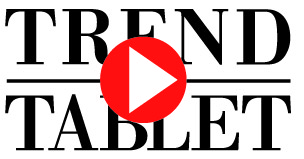GOOD NEWS
calla haynes
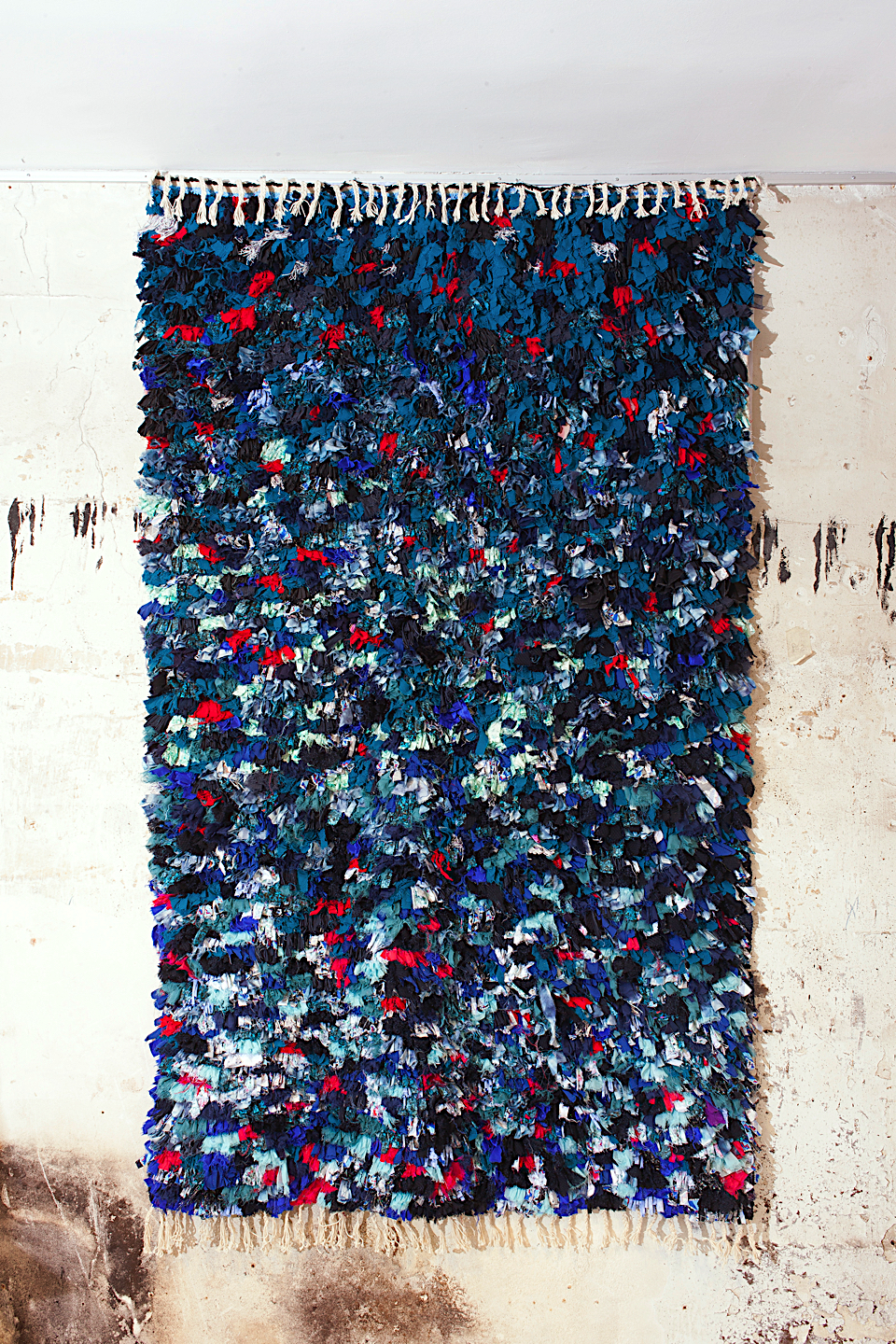
Calla Haynes is a Paris-based designer who launched her namesake fashion label in 2009. In 2015 she focusses on collaborations with diverse and high end brand around the world. This inspired her to explore the connection between European luxury and the Moroccan berber craft with as result ‘The Boucharoite Project’. We asked Calla Haynes some questions about how she tuns her fabric archive into rugs. Can you tell me about The Boucharouite Project? The Boucharouite Project is a collection of berber rugs made from fabric left over from my womenswear collection, CALLA. When I put the collection on hiatus in 2015, I was left - like most designers - with a rather large stock of unused fabric. Most of the fabrics were custom prints that I designed and hold a lot of meaning to me, so I didn’t want to sell them off (at a loss) or destroy them (like many luxury houses do). The idea to create boucharouite rugs just kind of came to me - I’ve long admired their designs and colour play, I just wasn’t sure I would find the right artisans to weave the rugs but after a lot of research and outreach, I found a wonderful group of women. How did you came to the idea to make rugs using your own fabric archive? What was your inspiration? Paris and Marrakech are very connected cities. The fashion industry here has always been inspired by Berber and Moroccan craft - just look at Yves Saint Laurent’s deep connection with Marrakech - so Berber rugs have always been on my radar. I wanted to do something meaningful with the left over stock of fabric - something sustainable and beautiful. Can you describe your creative process? The creative process is a true collaboration between myself and the weavers. The fun part for me is putting together 15-20 different fabrics that go into one rug - creating a colour story and mixing textures and patterns. As I supply the material, colour is the one thing I can fully control. In terms of design, this is where the true collaboration happens… through trial and error, I’ve learned to trust the women and just give them a general direction of design and composition. I send them photos of vintage Berber rugs and hand sketches, and then let them run with it. I’m usually surprised by every rug I receive, it’s never exactly as I imagined but always more beautiful. It’s quite a magical process! What is your goal with this project? My goals in the beginning were 3 things: - recycle and reuse fabric thus saving it from winding up in landfill or storage - support artisans and their crafts - make something beautiful. But I’ve realized the project is also spreading awareness about sustainability and circular economies. It’s making people think about their consumption of fashion and textiles, and also how they dispose of them. The fashion industry is one of the biggest polluters in the world, and as designers, we need to make more effort to combat that. The consumer needs to be more mindful about their speed of consumption and how they dispose of their unwanted clothing (millions of tons wind up in landfill each year). Are you also developing new recycling project ? Yes, I’ve developed 2 new recycling projects: The first is a collaboration with Toronto-based furniture designer Coolican & Company. Inspired by the footstools commonly found in the Moroccan souks, we’ve designed furniture that incorporates hand-woven cord (made from recycled luxury fabrics). The collaboration was launched at IFCC this week and we’ve already received orders! The second is a line of Moroccan Babouches (slippers) made from up cycled vintage berber rugs. They’re handmade in Marrakech and we give a second life to boucharouite rugs that are not necessarily in good enough shape to be resold for home use. These will be in store for Christmas time. What does the future hold for you? The Boucharouite Project is currently collaborating with H Project, the sustainable design department of Holt Renfrew, a luxury department store in Canada. We have a Pop-Up in the Toronto store where clients can get involved in the design process by creating a custom rug - choosing the size and colours they’d like and then following along with the production. As the stock of CALLA fabric dwindles, I’ve been able to recuperate fabric from other designers and help them in recycling fabric otherwise destined for landfill. My hope is to develop personalized projects for luxury houses - finding design solutions for them to be more sustainable. The rugs were first presented during Designer Days Festival in Paris in May 2017, and we are currently doing a Pop-Up in Toronto at H Project / Holt Renfrew. Interview by Isabeau van Maastricht
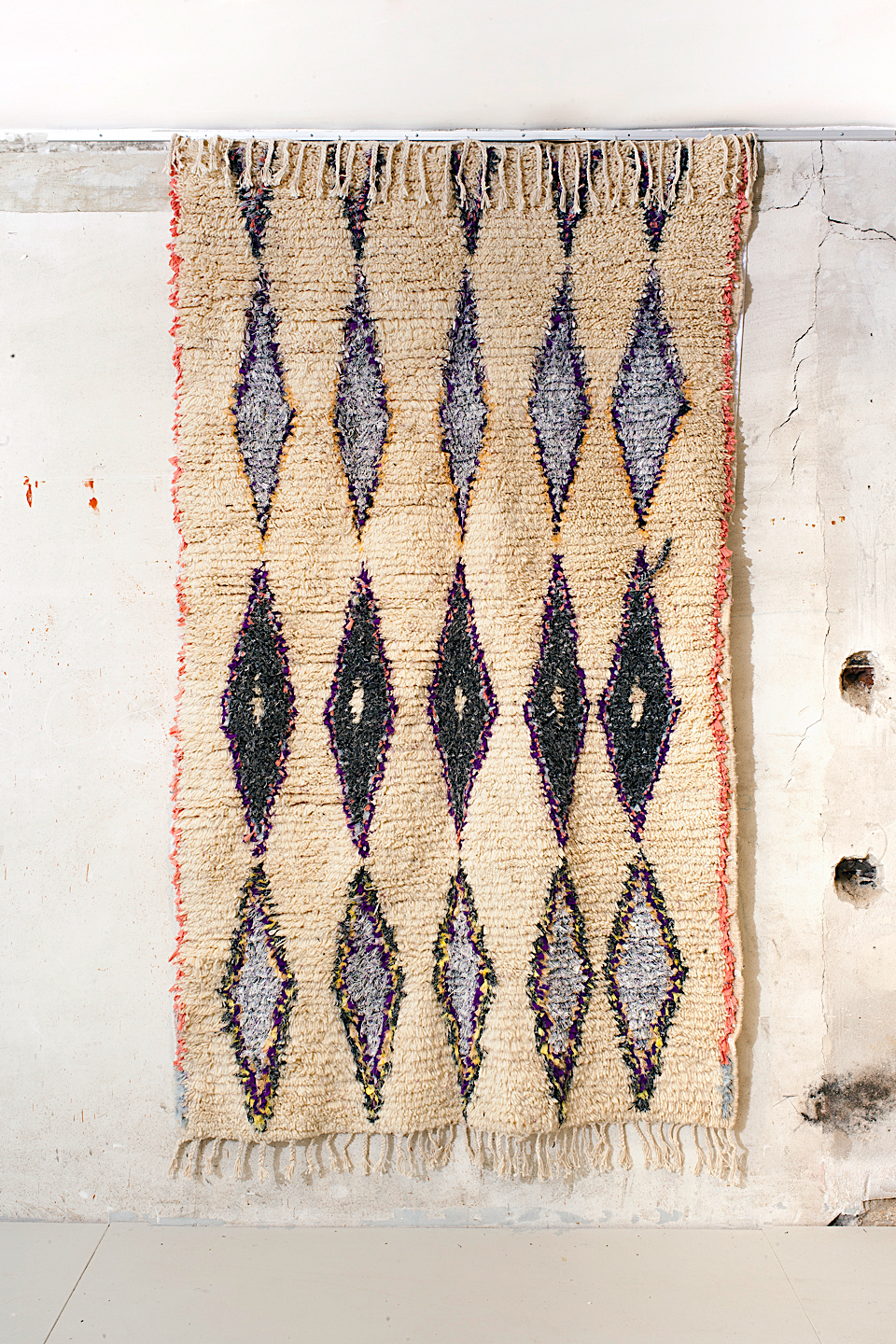
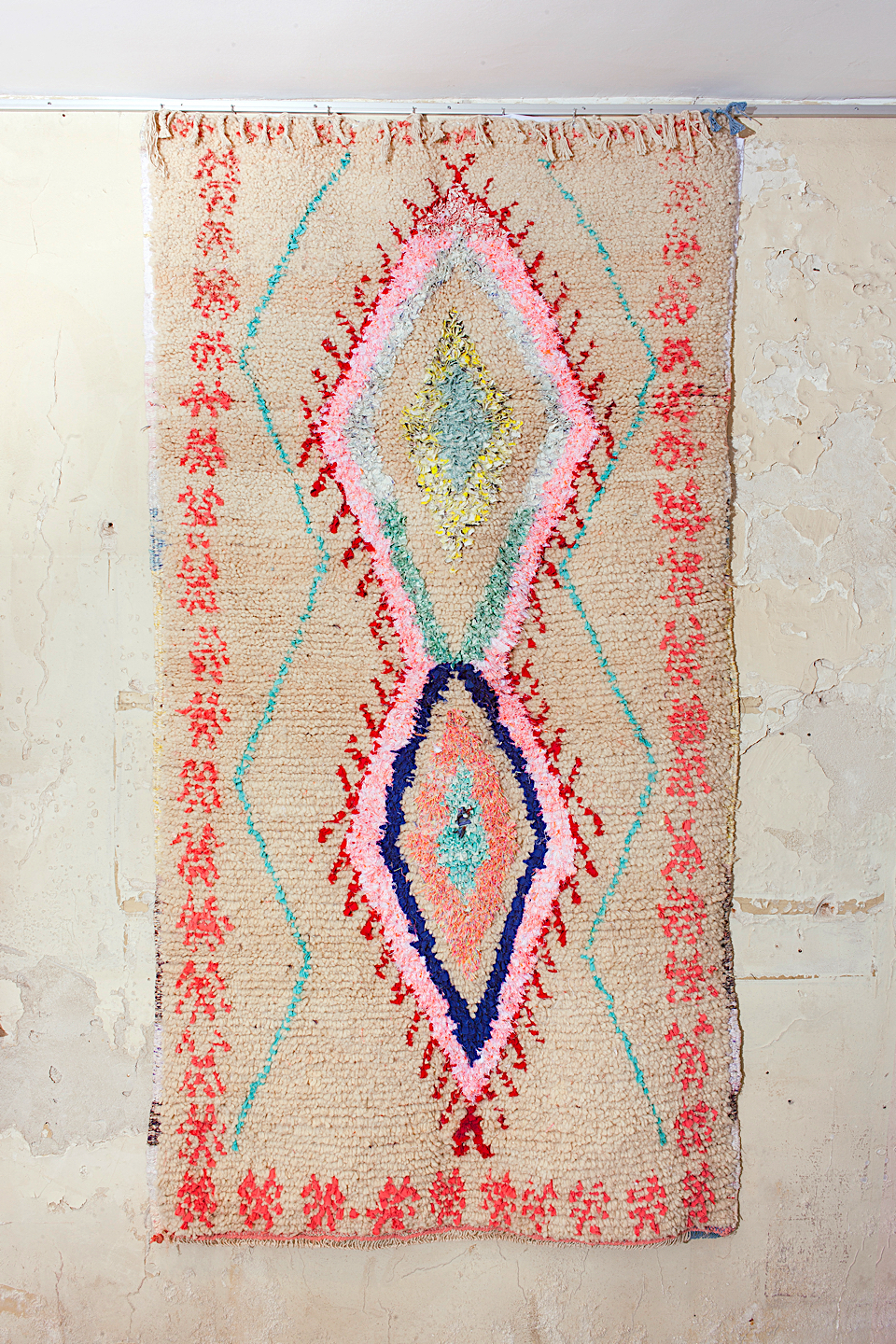
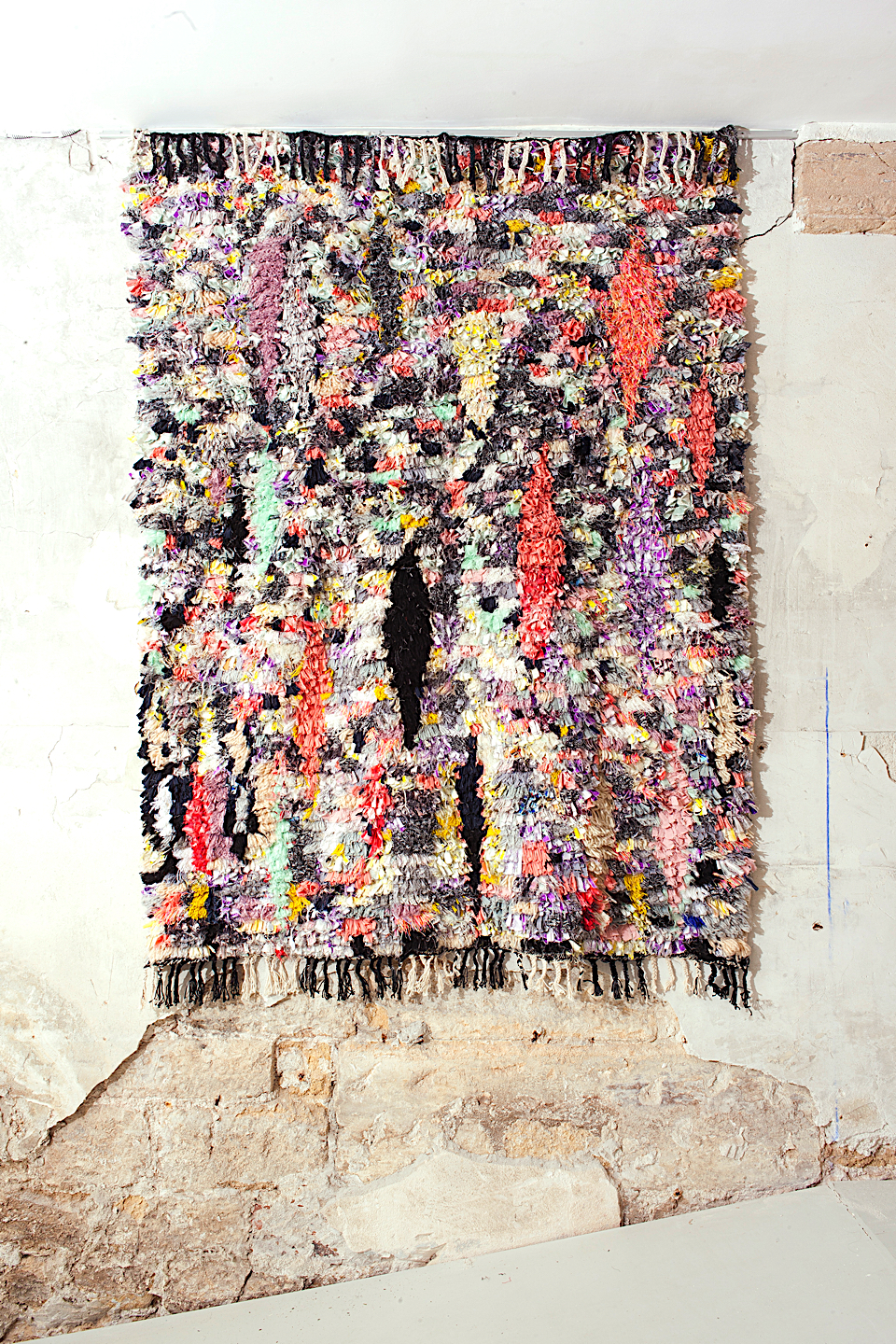
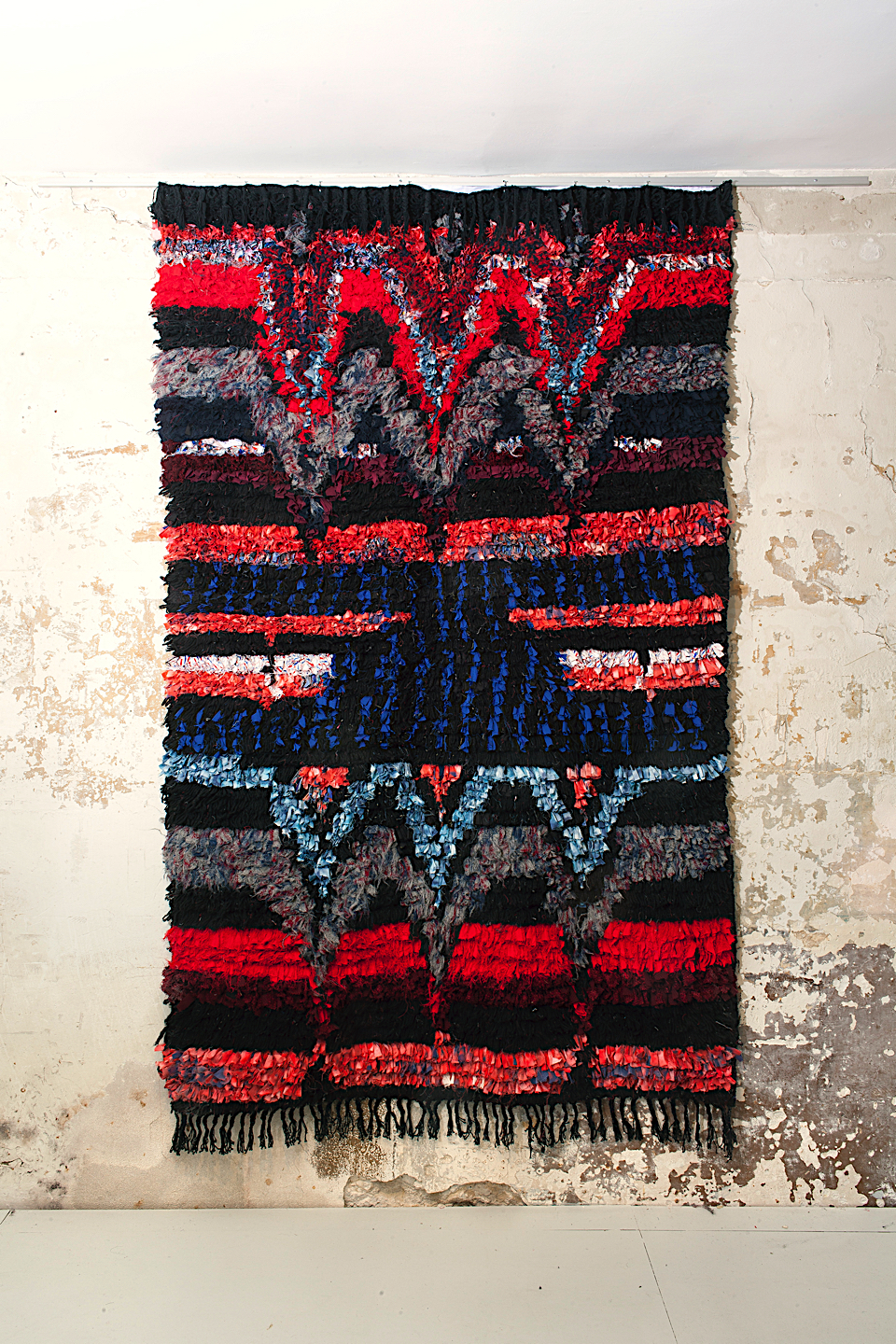
solutions for refugees
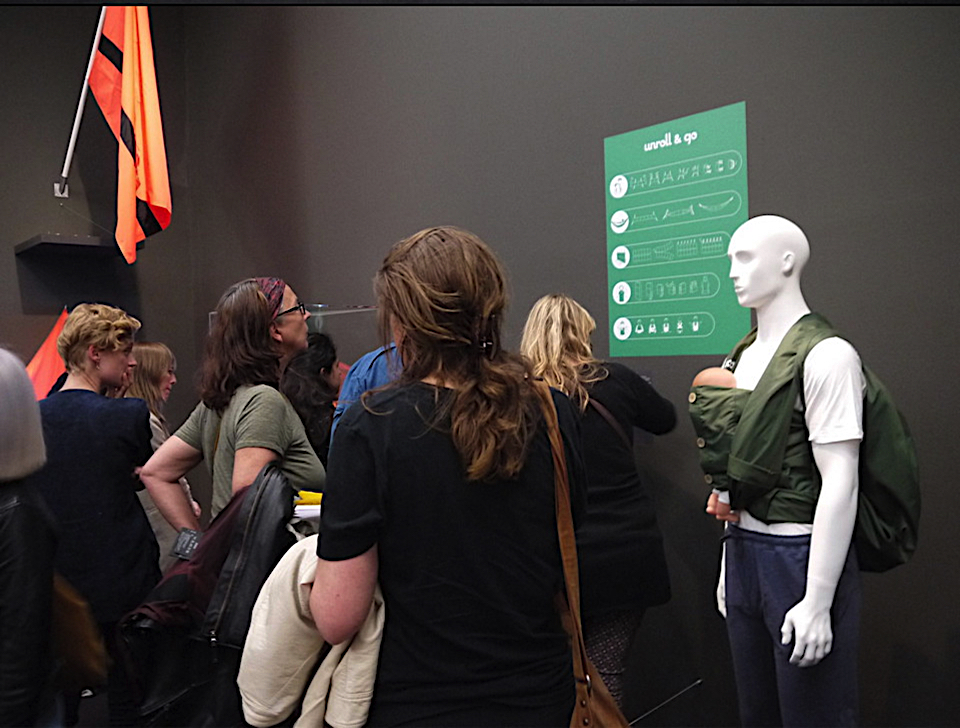
In 2015, the United Nations declared an unprecedented number of refugees: 65.3 million - one of the highest since World War 2. They are victims of persecution, having had to flee their homes, and their countries, due to war (especially in Syria). According to the United Nations High Commissioner for Refugees, 49% of those 65 million are women, several of whom are pregnant. These women, along with their infants, are an extremely vulnerable group.
It was this shocking and delicate scenario that brought together a group of six friends who had an idea called the Unroll & Go, which was entered into the "What Design Can Do" competition in 2016 - a call for creative solutions to the refugee crisis, hosted by the UNHCR and the IKEA Foundation.
The team's main focus was finding one solution that could solve a multitude of problems for the refugees. Since refugees need to be in constant movement, facing adverse weather conditions, tight living spaces, little privacy, and even having no place to sleep, there needed to be all-encompassing solution. Thus was born the Unroll & Go: a multifunctional fabric that transforms into several objects: a backpack (so refugees can carry their belongings), a baby carrier (for refugee mothers on the go), a privacy screen (to separate living spaces while in camp), among other uses, such as a hammock and a raincoat.
Since it's really light and waterproof, the Unroll & Go is a product designed for ease of use for those who just want to get through another day. It's simple, stylish and comfortable. Designed by Amanda Maykot, Max Targanski Medeiros, Luna Uaná, Juliana Barreto, Marcelo Cantuária and João Soares, it was exhibited at the Stedelijk Museum, in Amsterdam.
It's yet another testament of how Social Design, together with innovative minds that believe in a brighter future with equal opportunities for all, can help design a better world.
Lu Valenzza
www.amanda-maykot.com
www.whatdesigncando.com
Lu Valenzza born in Amazonia and based in São Paulo is a future trends enthusiast and an anthropologic observer. She is offering creative research, communications support, and trend forecasting to provide actionable insights to help society and businesses move forward in the coming years, always in touch with tomorrow think scenarios for redesign a better world.
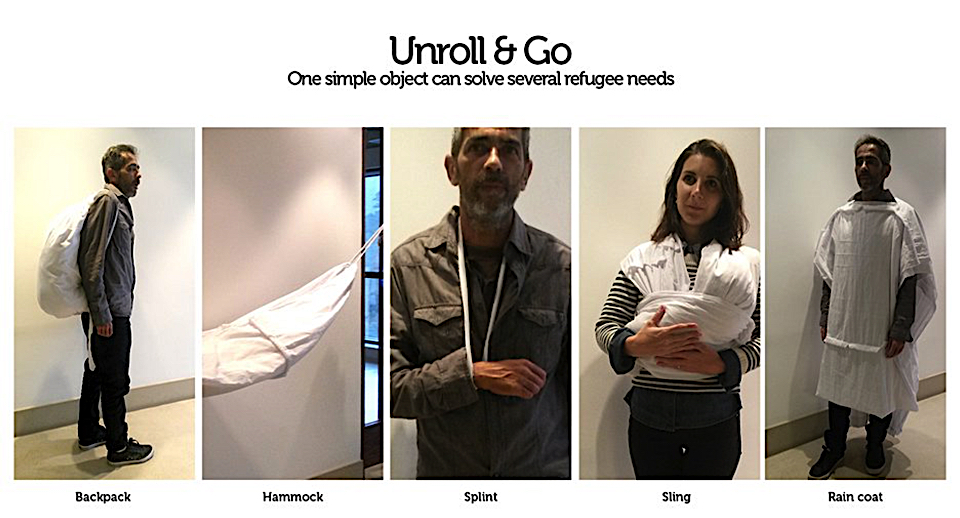
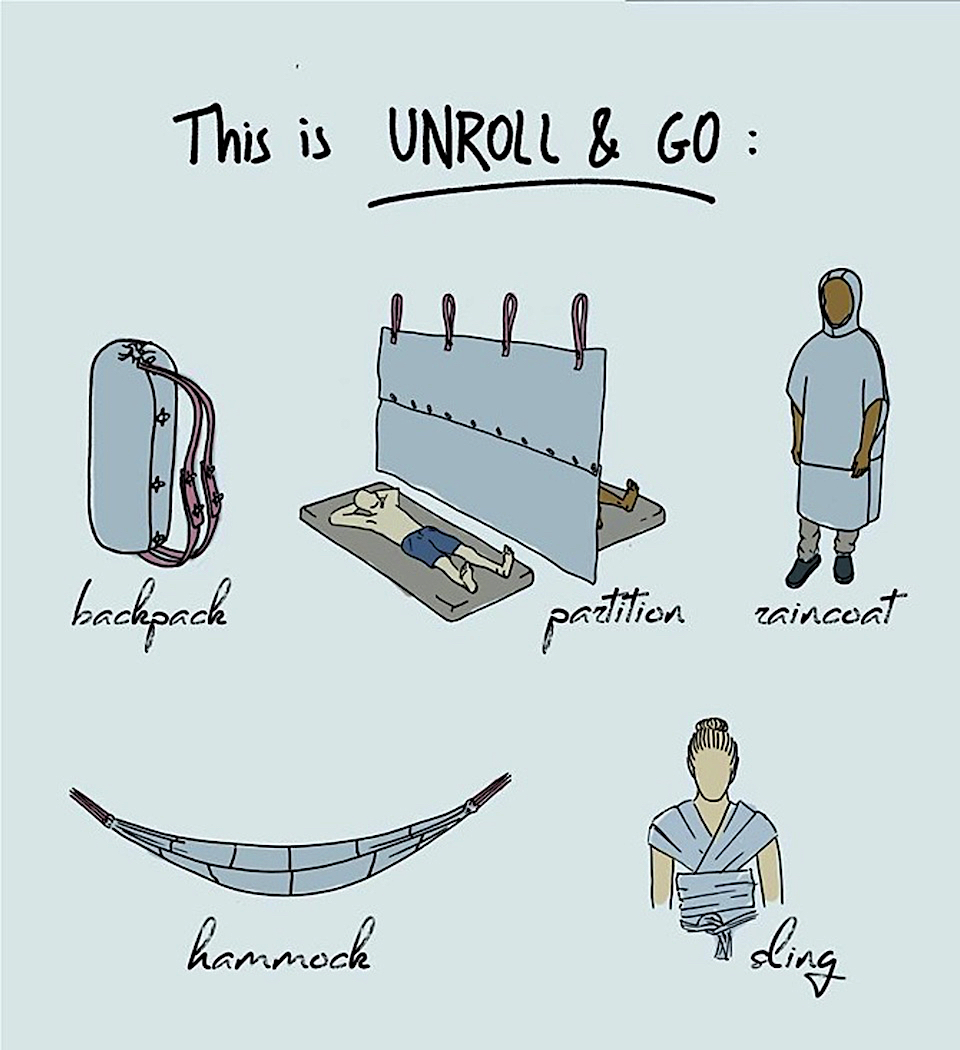
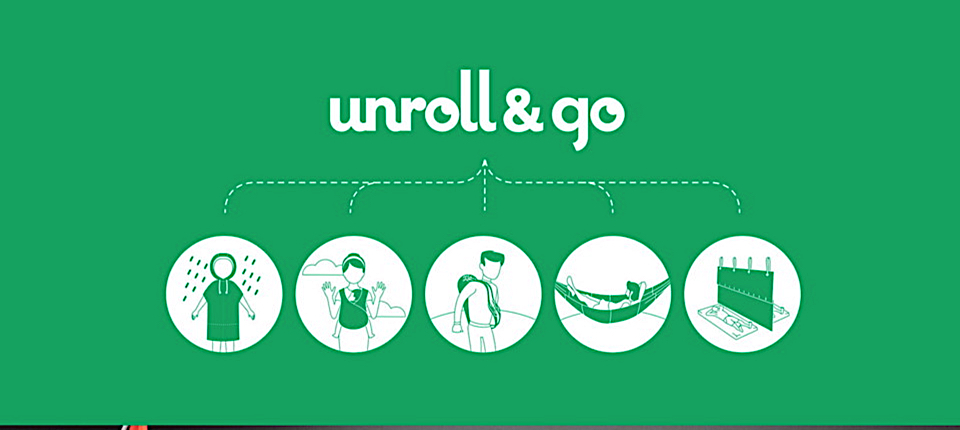
violaine buet - seaweed designer
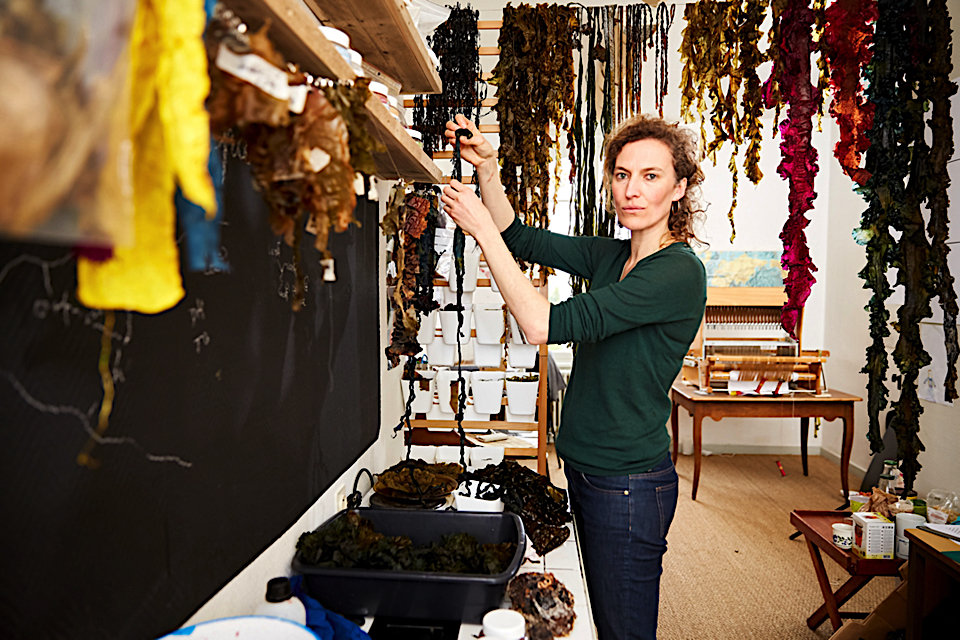
Violaine Buet is a designer with a passion for textile design and artisans. For her « the beauty of each design or material is intrinsically tied to the harmony between each link, which unites every hand involved in the creative process ». In September 2016 after her return to her birthplace Brittany she set up her studio for the research and creative development of macro-algae. She is accompanied by a network of experts, researchers and artisans with whom she collaborate.
For you to get to know her better our editor Cecile Poignant interviewed her .
What is your main inspiration for this project?
My inspiration was born in a gap, a step in my life, between void and rebirth.
And from the simplicity of the access to nature and its silence ; between seaweed and myself ; wind and water, no bells and whistles, no promises, no glitter... And no desire to conquest but to welcome what could eventually happen.
Sometimes I find we live in a "noisy" society, where we are brought to believe the more bustle we make, the more space and acknowledgment we will get... the longer our eternity will be...?
What fascinate you about algae?
They come from so far (billion of years), are connected to the origins of life, provide 50% of the oxygen on the planet, but are still so discrete, so humble...
For the wideness of their esthetic spectrum, they embrace multiple facets, they are challenging and playful.
And for their emotional impact; a wet seaweed has an amazing connection with tenderness of human skin, the vibrance of the animal world, the benefit of the vegetal lineage...
How did your background in design influences your project?
I looked at seaweed in an unvisited angle; as designers, in the very first step of a project, we have to let our frame of references behind, and look at things with fresh eyes; to let the field open for new connections to emerge, to let go the cerebral and start with our senses. It sounds very simple but it means to stop controlling.
Once this intuitive and sensitive exploration has opened the fields for new possibilities, as large and as wild we can, then we confront those paths to the material reality, using our knowledge and know-how.
And the knowledge of the others: experts and searchers of the subjects; and here is may be the most important influence of my design background in this project; to be able to network, to find experts where I had questions. To gain their interests too. I really enjoyed building up a network of various and precious interlocutors, custom-made to this seaweed adventure, my own skills are limited but if I am able to gather the very right people, our commons skills are so wide.
Do you think the material of this project could be used for mass production in the near futur?
With ennobled-seaweed as shown in the pictures, I see the birth of a new craft discipline. A craftmanship dealing with an organic material, a biodegradability factor, a sustainable ressource. The aim is to magnify seaweed as a material, to reduce some of its constraints without altering its qualities. And to respect its seasons.
This is one of the seaweed chapter, related to a craft production, related to the rhythm of an marine ecosystem. I feel dedicated to this story, and will continue to push its significance. It is still the very beginning. The understanding I get of the material trough this approach will hopefully give me some adjusted insight and projects connecting seaweed with industry, mass market. ... and probably seaweed could be a precious milestone to question futures mass market?
What fascinate you about designing material?
It is like drawing the beginning of a story... it is a movement, connected to infinity.
Can you tell me a little bit about the design process, how do you start your design and what's your goal ?
In this seaweed project, I was guided by the material itself, I adjusted my intuitions and my tools to the material. Once I had settled a protocol, I knew the margin I could play within.
If I refer to the process of designing a surface, a pattern, I usually start with a strong image, it can be a strong sensation from a mental image, a kind of inner landscape? Then the goal is to keep, through the whole process and specification, the feeling of the initial image alive. I strongly feel I have to team up with the material, and that's so joyful when something extra happens at the end; for example I worked on a woven piece for a competition, with the help of a weaver, and once it was over I was stunned by the reaction of the pattern to the light ; the check pattern turned opposite under the light, the darker parts became lighter, the lighter ones became darker! Certainly, my goal is to approach emotions.
How would you describe yourself ?
...A laminaria saccharina?
What impact do you want your work to have on society?
To disappear one day without any track...
To encourage multidisciplinary long term researches, especially scientist with creative people : for me the key of an energy of innovation.
To relay the power of creativity, the inventiveness of nature.
What are your plans for the future ?
I am ready to connect this adventure with audacious and sustainable projects!
A scenographic for living arts? A haute-couture dress? A global project including seaweed as a singular link in a blue economy system? A seaweed sculpture? Custom-made accessories? Ephemeral jewellery ? A range of light appliances? A seaweed partition wall? An algae food-design workshop with a chef? The story is yet to be written.
But for sure I would like to continue with a wide spectrum, from design, to art, and industry ; to take the research further in collaboration with experts, to manufacture custom-made textile pieces, to develops bigger scale seaweed-volume, to take part to challenging projects around seaweed, to explore languages of seaweed with a network of different craftmanship, in order to rise a range of singular products, to set up dialogue with thinkers like Gilles Clement to nurture questions rising up while interacting with an ecosystem.
I have few exhibition projects taking shape too.
I am corresponding for a year now with the german artist and seaweed designer Julia Lohmann and joining forces with her in "Department of Seaweed", a transdisciplinary collective of makers who specialist on the sustainable use of seaweed.
Being from and based in Brittany I develop my network locally, I am prioritizing local seaweeds and actors ; this shared platform would allow us to enlarge and apply our discoveries to different economical and cultural contexts at an international scale, serving sustainable principles and local communities.
Cecile Poignant
violainebuet.com
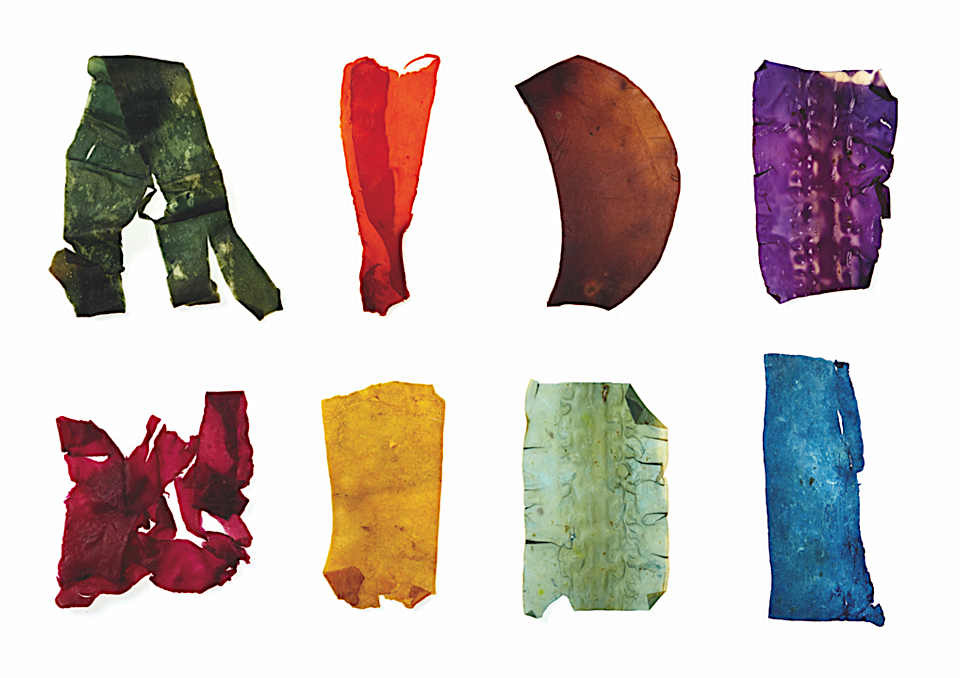
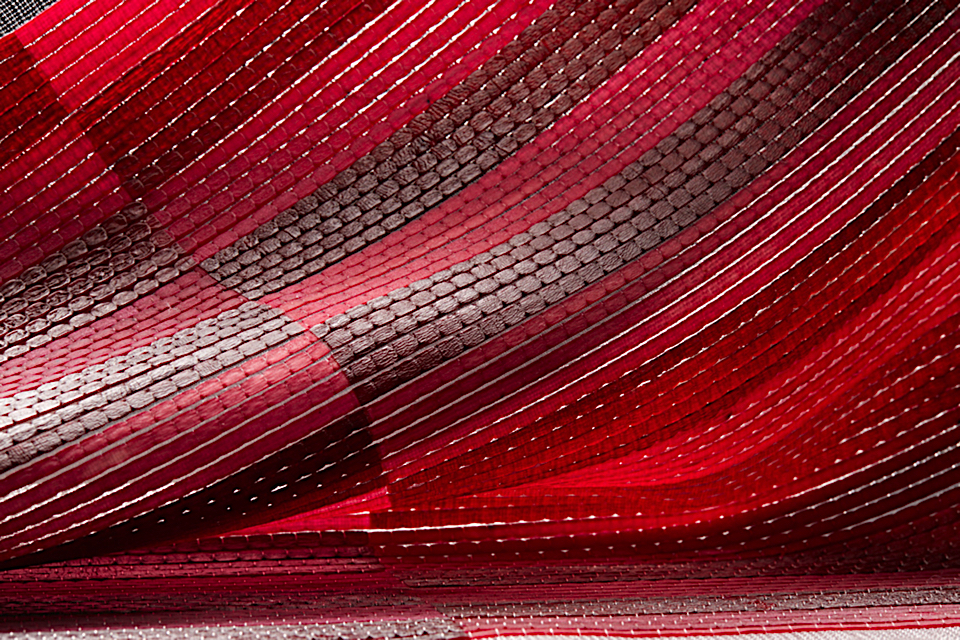
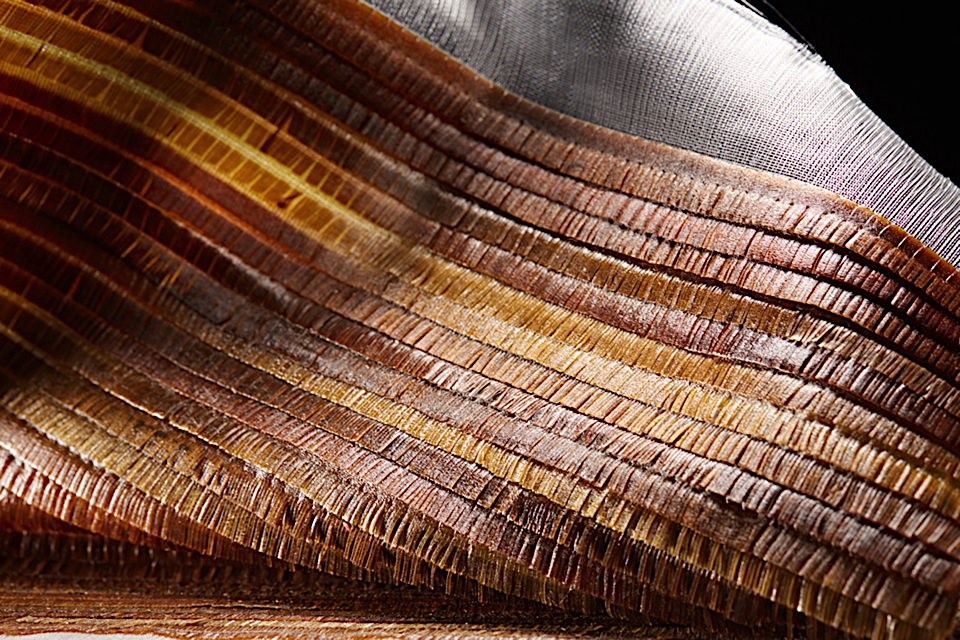
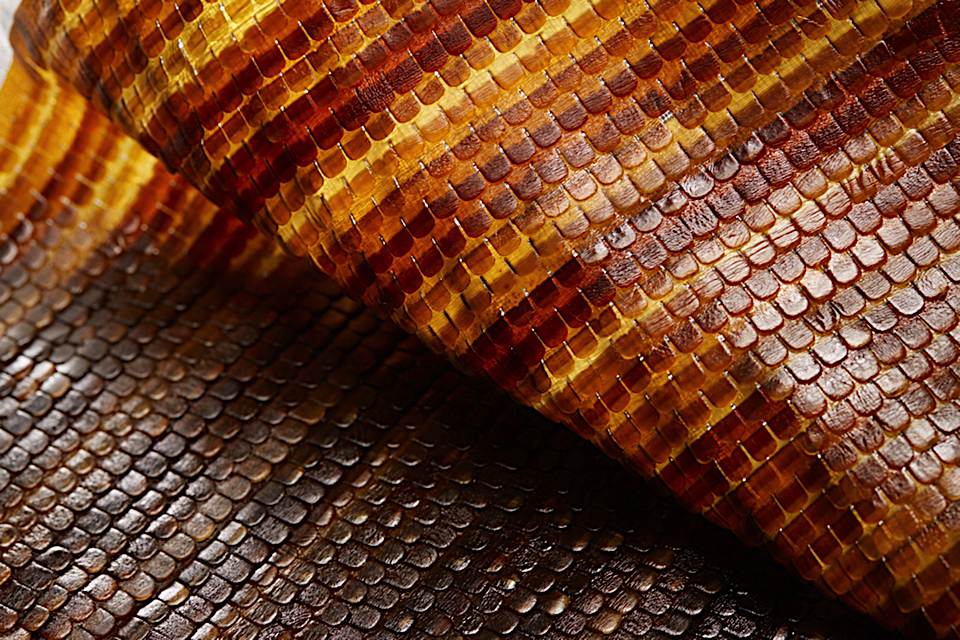
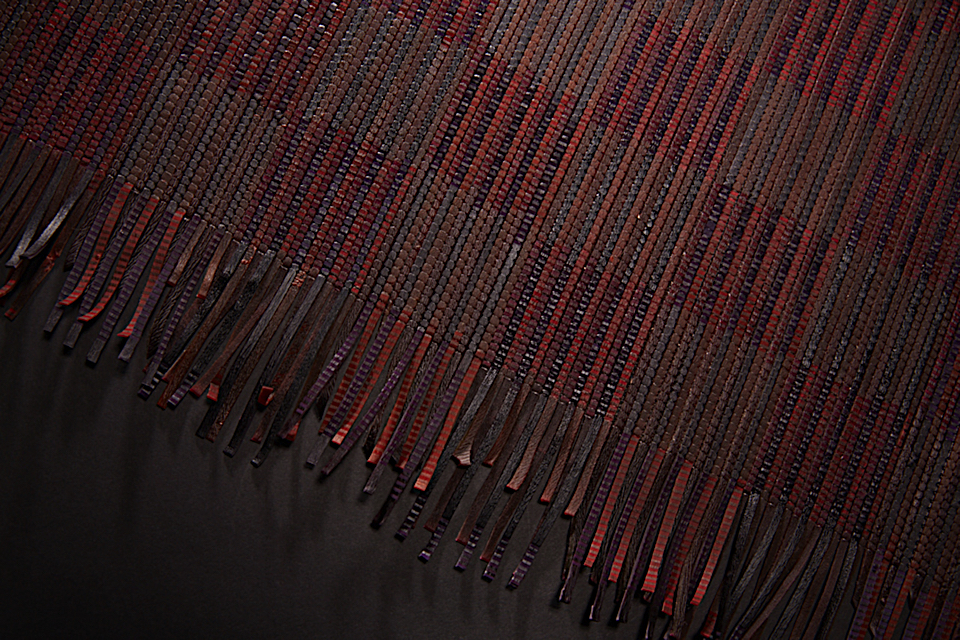
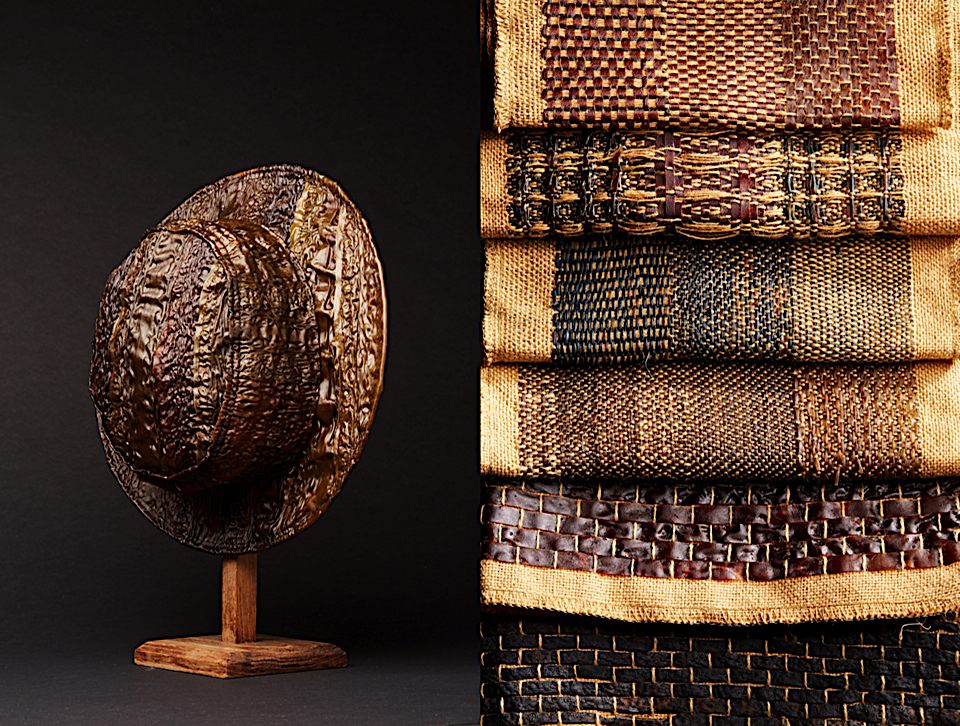
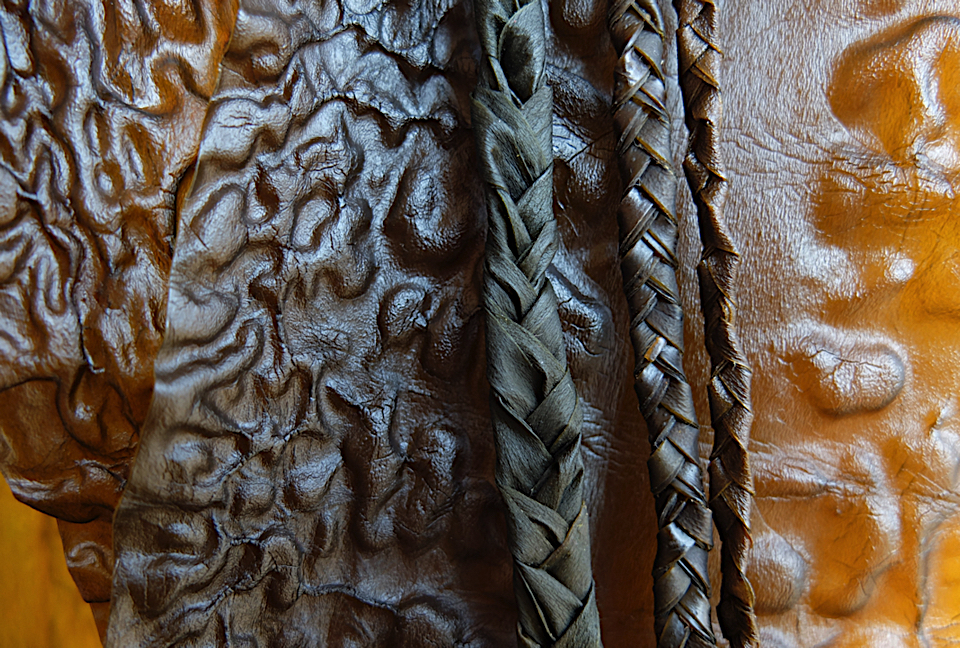
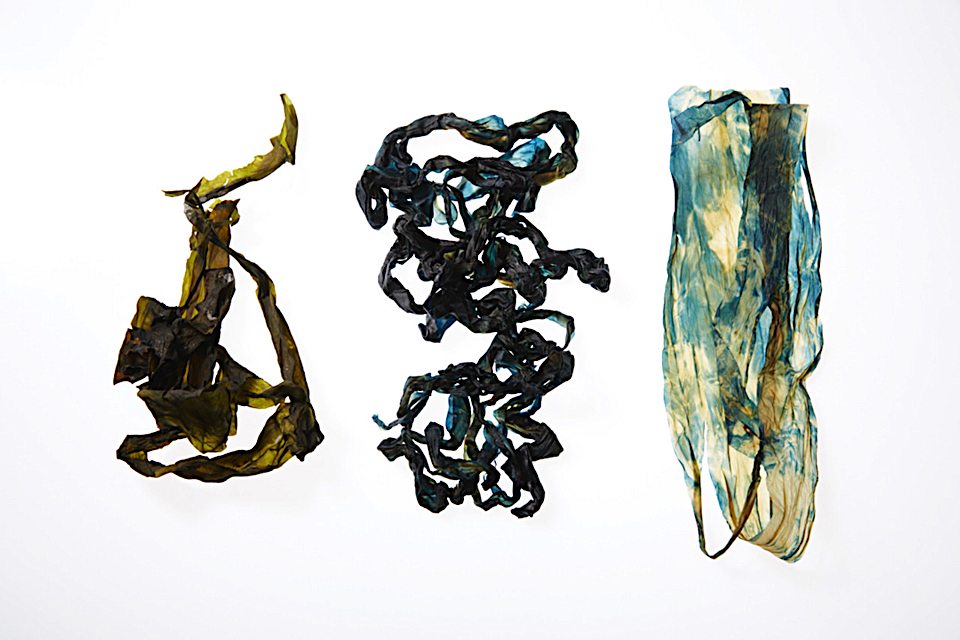
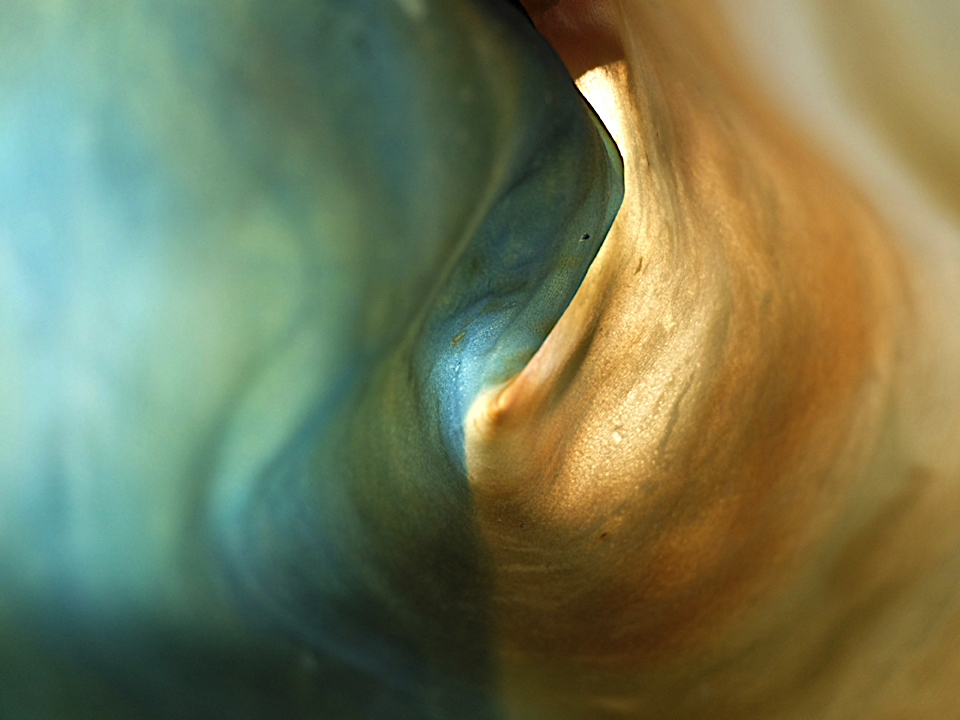
mycelium leather
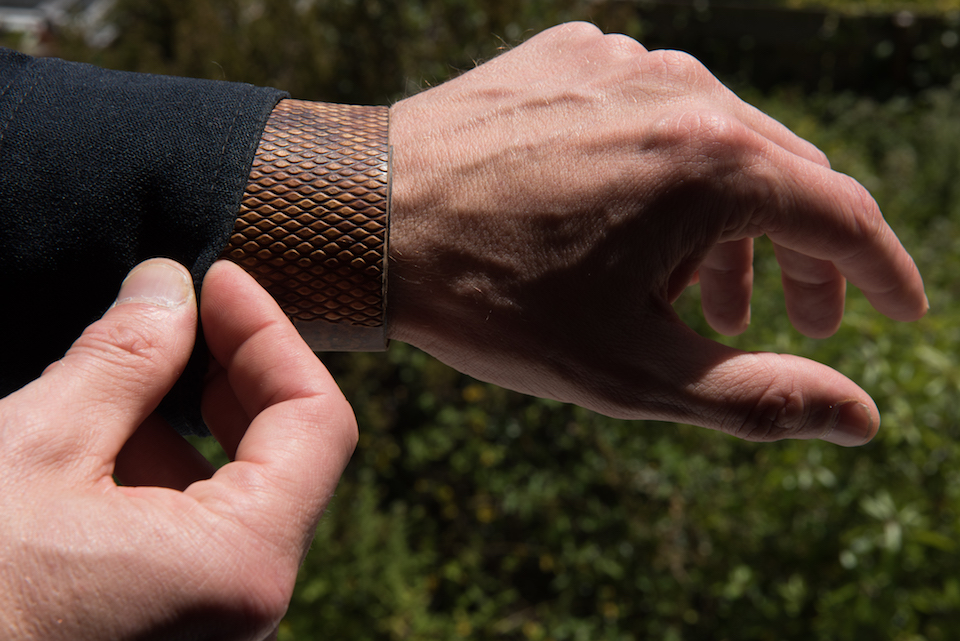
Biomaterial Company MycoWorks, a San-Francisco based startup, is changing the way things are made. They produce sustainable products and apparels from fungi found in the roots of mushroom. The root-like fibers called mycelium are stored in a jar for three to seven days until the mixture expands and forms into clumps of material. The company started to use the material for footwear, batteries and automobiles.
MycoWorks really caught our attention with their new development and goal to create a material that will be used as a leather substitute. We took the opportunity to get more knowledge about this innovative technique by getting in touch with Mycoworks.
Is mycelium a material that hasn't been used by mankind before?
Mycelium-derived health supplements such as nutraceuticals and prior inventions utilizing fungal mycelium as a binder for fibrous materials exist. However, MycoWorks co-founder Phil Ross's use of mycelium as a moldable and versatile casting material, and the advancements he and MycoWorks have made in mycelium material technology, represent breakthrough innovations in the use of this material.
What was the main motivation to start working with mycelium?
Phil initially began cultivating mycelium for medicinal use (ganoderma lucidum, one of the fungal species we most often use, has a long history of use in Traditional Chinese (herbal) Medicine), but when he recognized the plasticity, versatility, and strength of the material, he began using it as a casting material for structural forms. This natural fiber is abundant, grows virtually everywhere in the world, and transforms agricultural waste into usable materials, so its availability and sustainability are also motivating factors.
Would you call mycelium a costum made material?
Mycelium is the vegetal tissue of fungal bodies, so it is present in nature in natural forms. However, the cultivation and processing techniques MycoWorks applies to our mycelium-based materials are indeed customizable, engineer-able, and unique.
How long does it take to grow the “leather” that you can use for one handbag?
Under two weeks.
What other problems do you think you will be able to solve with mycelium biology?
In terms of material applications, in addition to its use as a flexible "leather" that can be used as an alternative to animal hides and synthetic leathers, mycelium materials can also replace materials such as rigid and soft polymer foams, and engineered wood products, both of which have applications in industries that range of green building and insulation to interior design, furniture and cabinetry, and aero-astro-automotive.
Mycelium has been shown to be quite effect for bioremediation for carbon-based pollution and waste sites.
Are there any other projects you are working on at the moment?
MycoWorks is 100% focused on launching products made from our mycelium based materials for the apparel and accessories industries.
What does Mycoworks would like to achieve in 10 years?
MycoWorks is focused on introducing mycelium material technology into a wide range of markets including apparel, footwear, bags/accessories, automotive, and interior design. In 10 years, we would like to have achieved widespread adoption of this technology for use in consumer products, for industrial-scale manufacturing, and to have launched broad scale research, development and advancement of this material technology towards future applications and features.
There is a majority of positive aspects to the development of mycelium leather; it is good for people, good for the earth and animal free. The companies closed loop process has low water and energy requirements and can even grow several sheets on a pollutant. For a more sustainable future of materials and manufacturing we need this kind of innovations. Mycelium may become a big part of our future, not only in what we wear, but it might also play a big role in our interior.We can’t wait to see what Mycoworks has to offer in a few years.
Claire Granlund
www.mycoworks.com
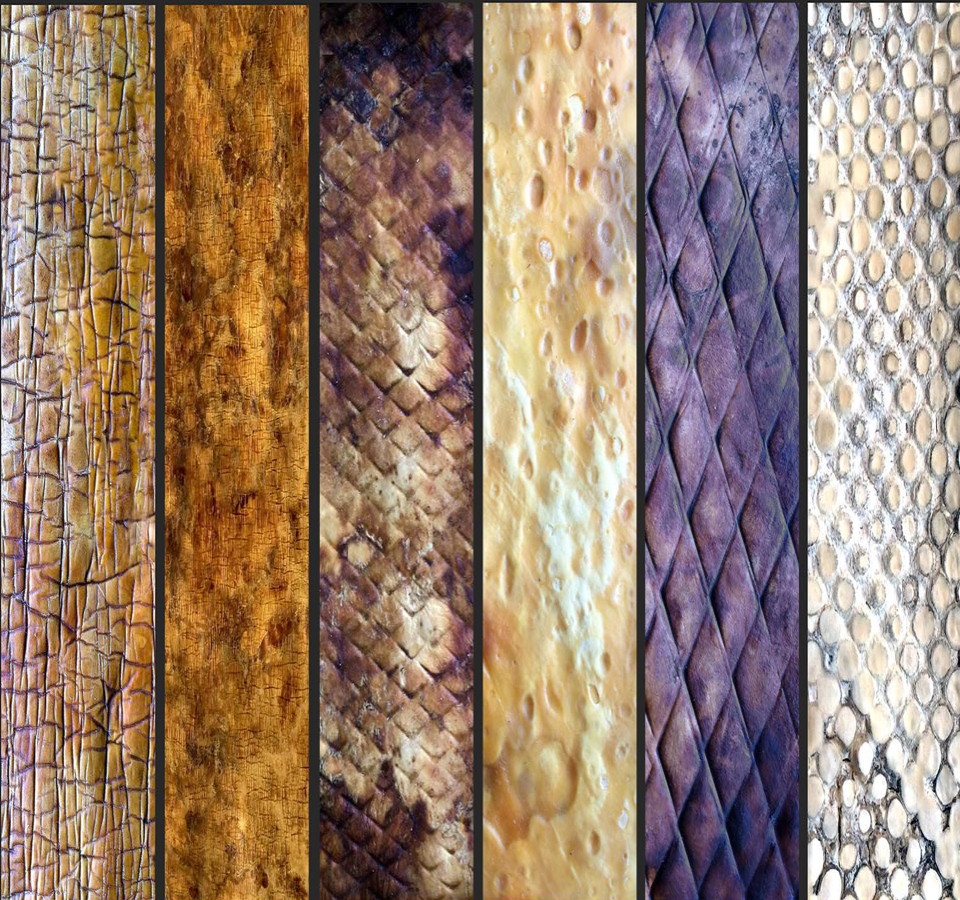
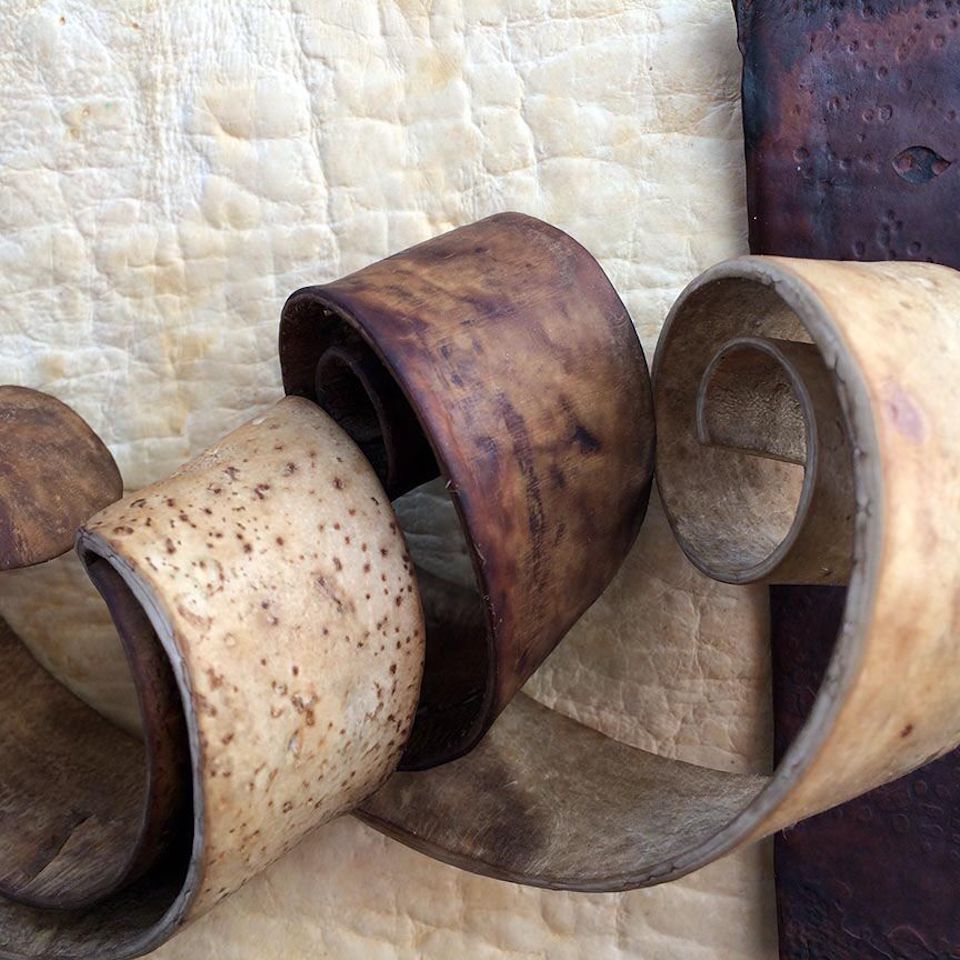
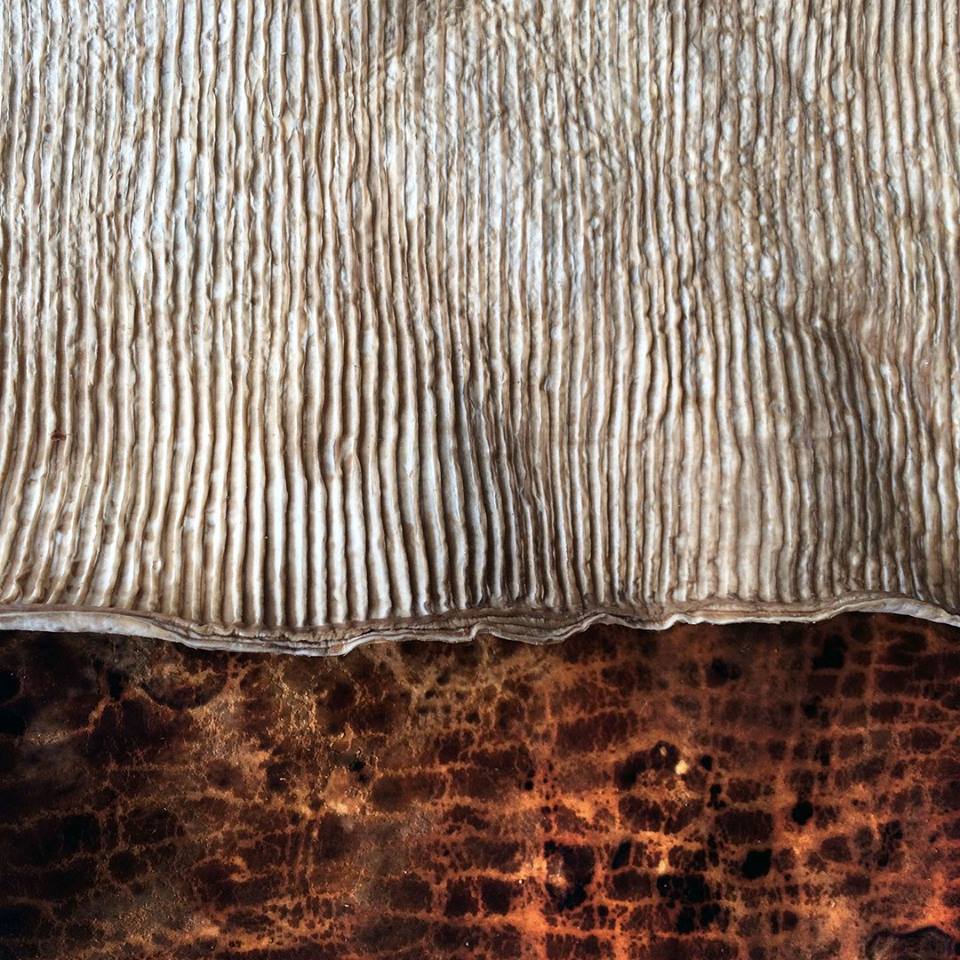
orange is the new green
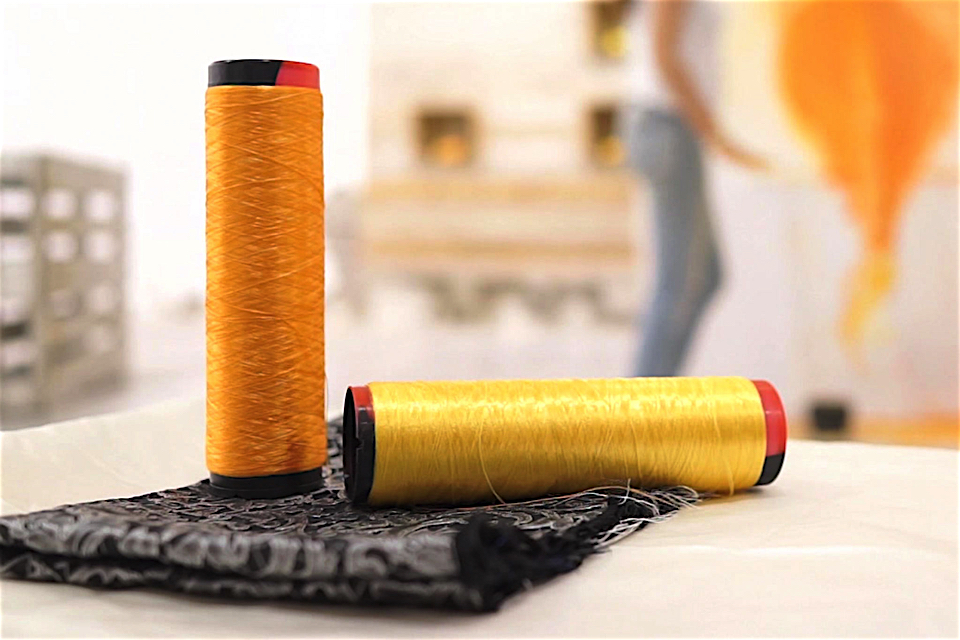
Italy stands amidst other countries for luxury, beautiful handcrafts and delicious food. Imagine you could combine these assets in one, what could this result in?
Sicilian brand Orange Fiber has the answer: high quality and sustainable fabrics which are made out of citrus fruits waste. Indeed, instead of throwing away the citrus byproducts - 700 000 tons a year (only in Italy) - the company uses these resources to produce its textiles, making sure that there won’t be any lost opportunities or challenges like high costs or a big environmental impact.
Innovation becomes magical as the final product doesn’t have the rough aspect of the orange but rather the soft character of silk making us dream of wearing citrus-fruits scarfs keeping us warm on a slightly cold summer night.
The plant based manufacturing approach caught the eye of the Florentine Maison Salvatore Ferragamo who launched in Spring 2017 a capsule collection with Orange Fiber, showing thereby the chic Italian way of ecological and social responsibility.
Other big luxury stakeholders like Gucci, Fendi and Prada are following suit by participating in the first edition of the Green Carpet Fashion Awards Italia which will take place during Milan Fashion Week in September 2017.
As the green mindset of Ferragamo, this move shows the readiness and will of leading Italian luxury brands to be part of the change and to integrate an innovative, conscious and progressive approach into their DNA.
We can’t wait to see more brands joining the movement and reshaping the way we imagine, and feel clothes… Chestnuts based shirts for the upcoming autumn sounds like heaven to us!
Chloé Stückelschweiger
Chloé is a trend forecaster, brand consultant and editor.She was born and raised in Paris with Austrian blood. in 2014 She founded Granulate in Berlin, a global trend office which aims to explore & identify upcoming dynamics that contribute in creating tomorrow’s world. On a more personal level, her heart definitely beats for yoga, French literature, spicy food, Europe and the bright colors of her new hometown since 2016, Lisbon.
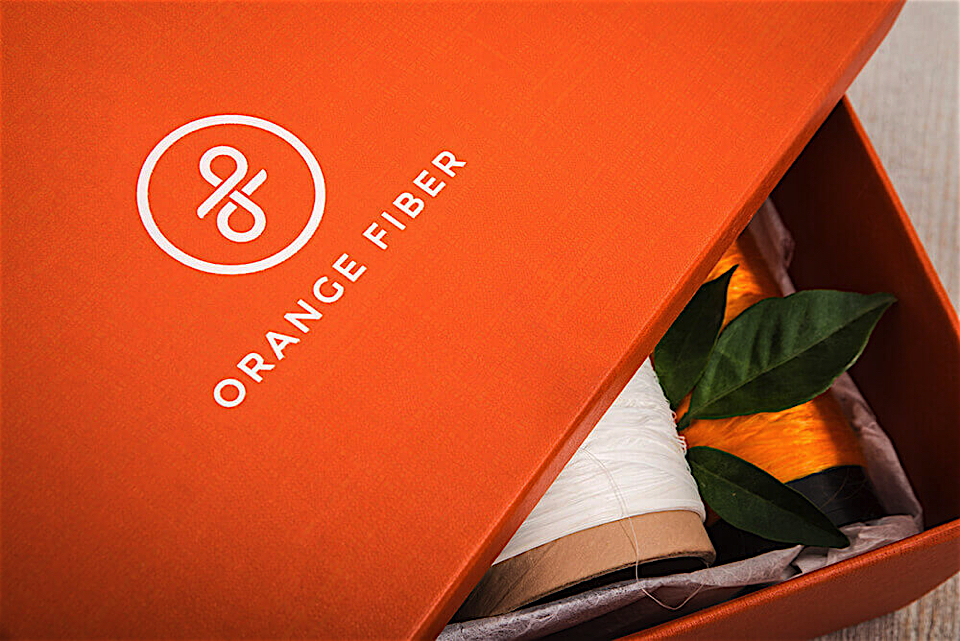

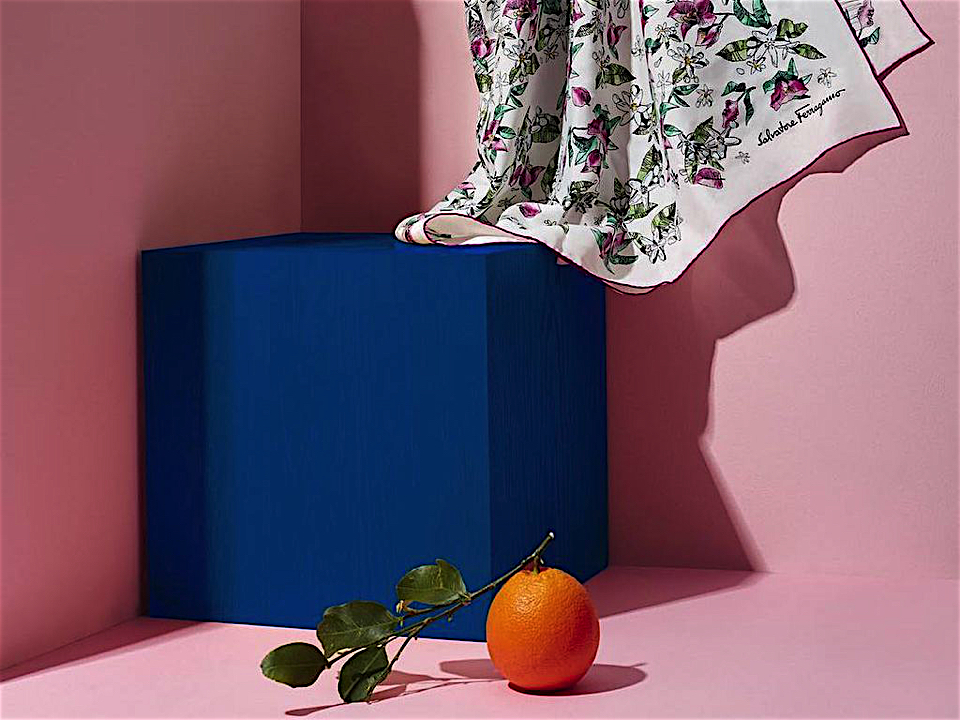
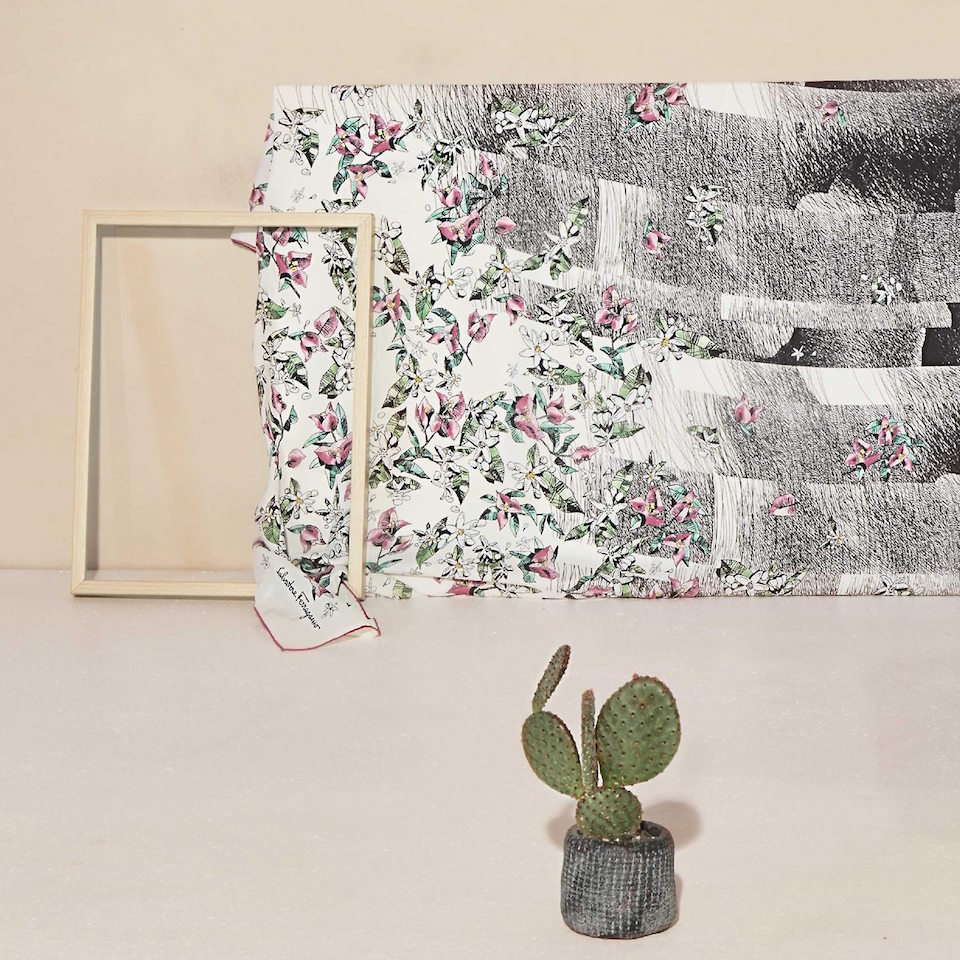
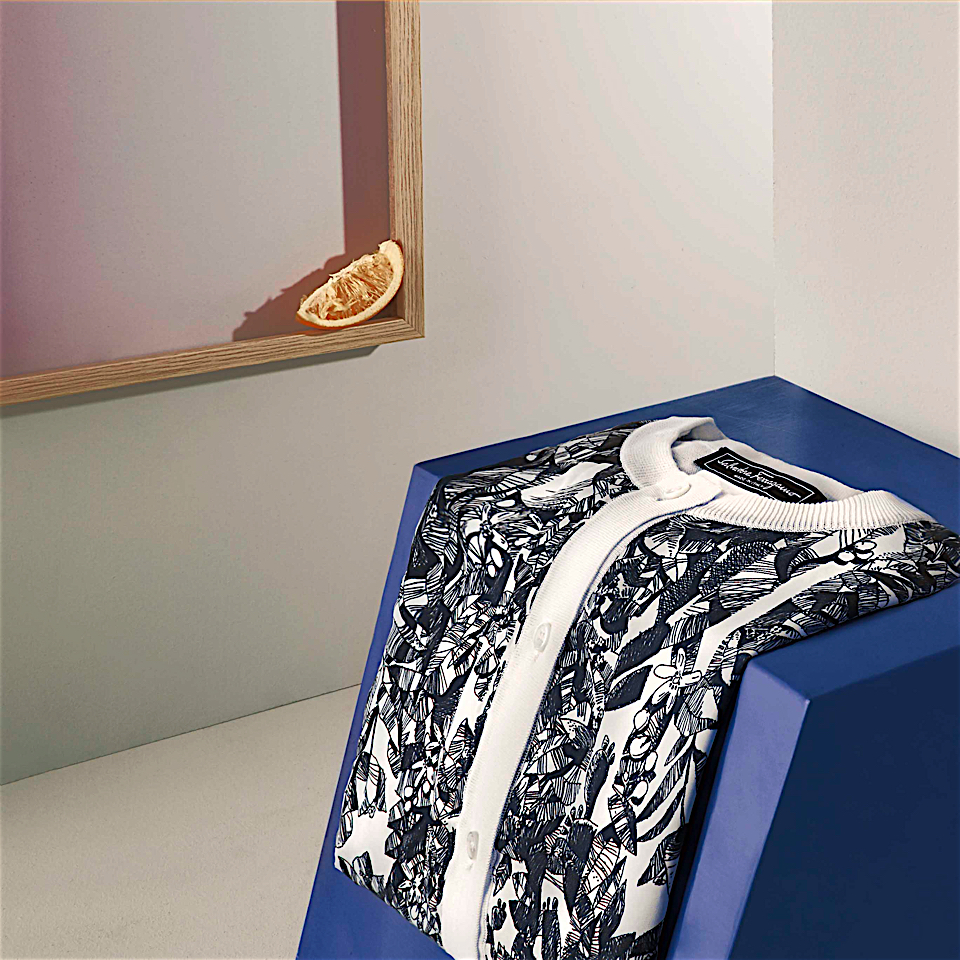
a colourful future
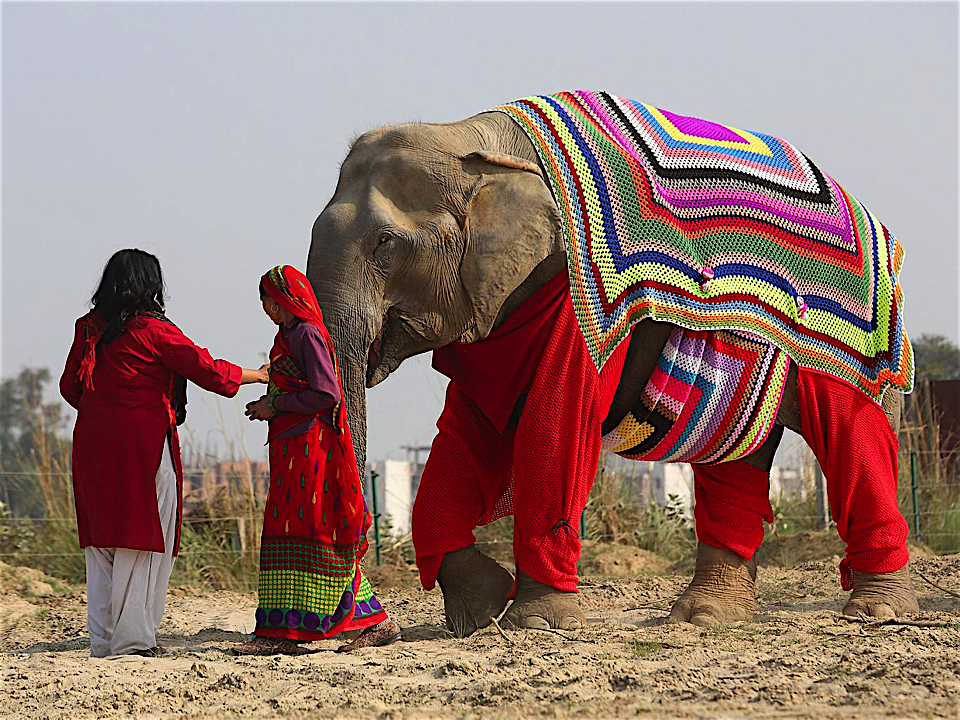
Photo by Roger Allen,
The Wildlife SOS, an Elephant Conservation and Care Centre in the northern city of Mathura, is bringing us some positive news. Volunteers from a village near the centre knitted colourful, supersize jumpers to protect the elephants from cold temperatures during winter season. The Wildlife SOS is a care centre for abused elephants. Kartick Satyanarayan, founder of the centre, said in a press release: "It is important to keep our elephants protected from the bitter cold during this extreme winter, as they are weak and vulnerable having suffered so much abuse making them susceptible to ailments such as pneumonia.
The cold also aggravates their arthritis which is a common issue that our rescued elephants have to deal with." The beautiful coloured, stylish ‘blankets’ cover their back, neck and legs. It took around four weeks for every piece and protected 23 elephants so far.
MORE
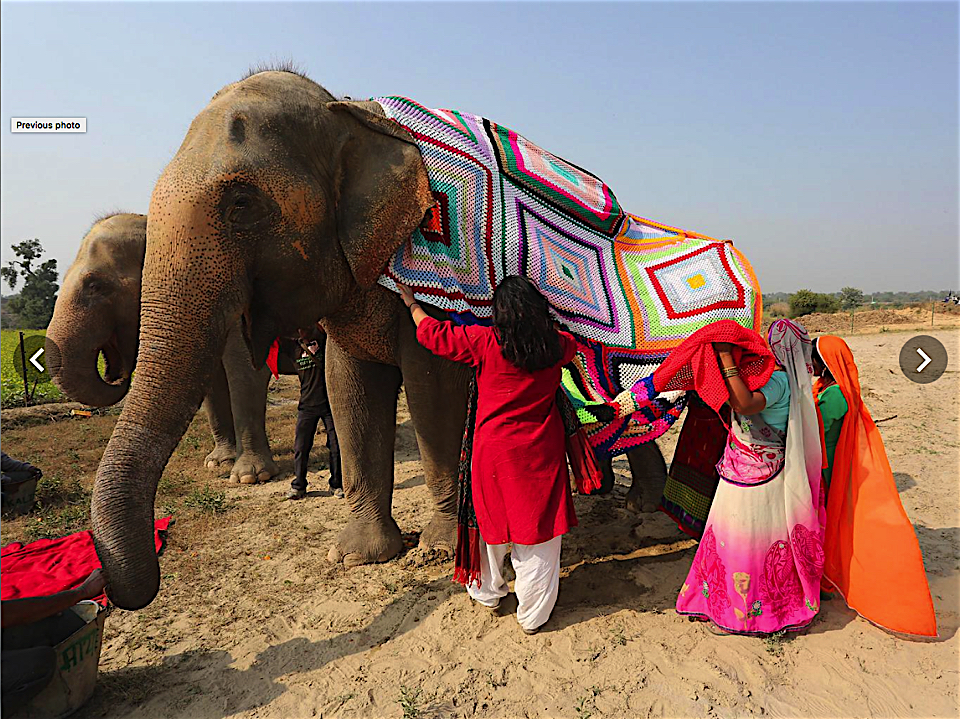
Photo by Roger Allen
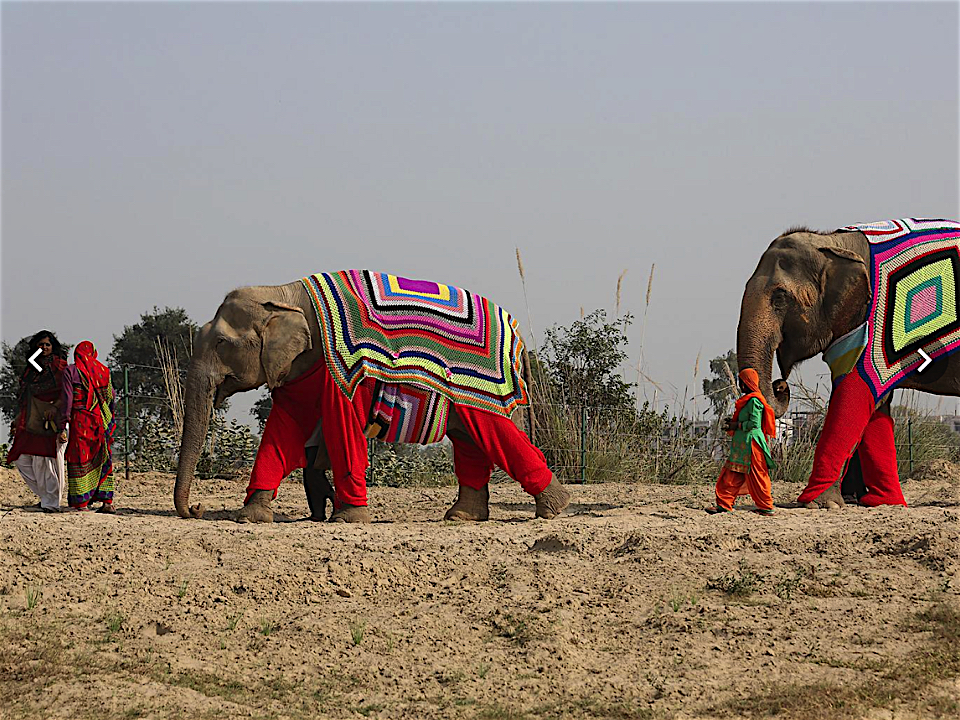
Photo by Roger Allen
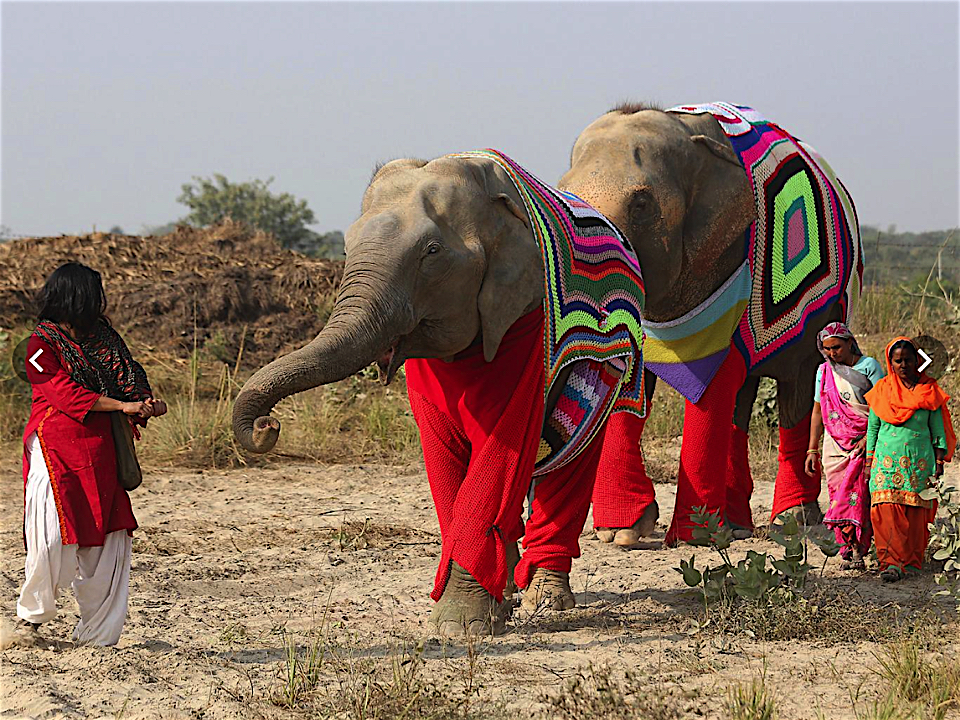
Photo by Roger Allen
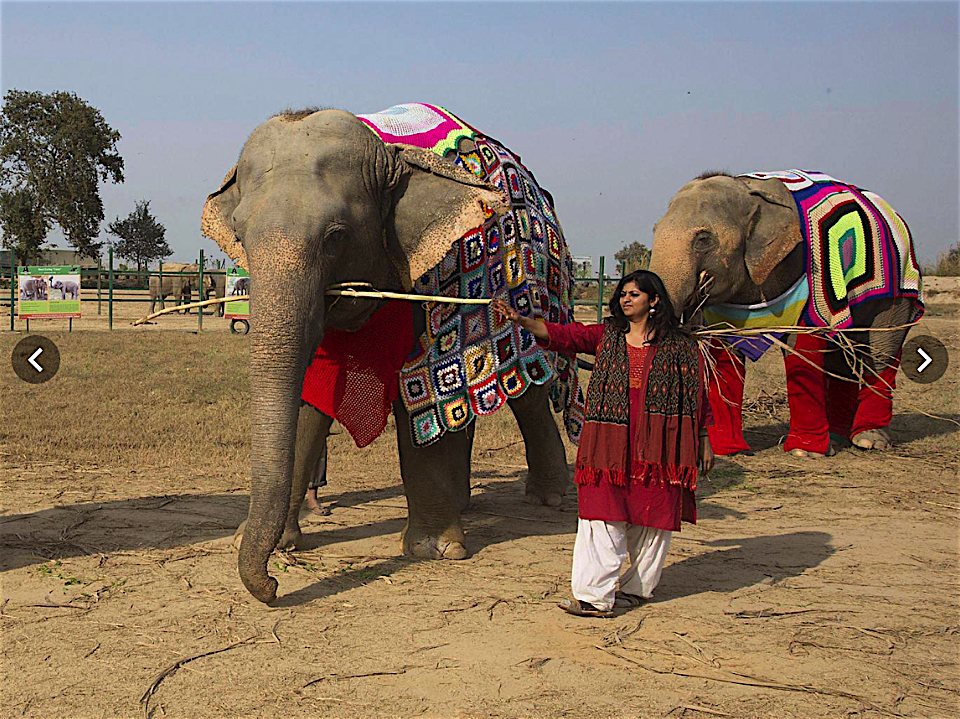
Photo by Roger Allen
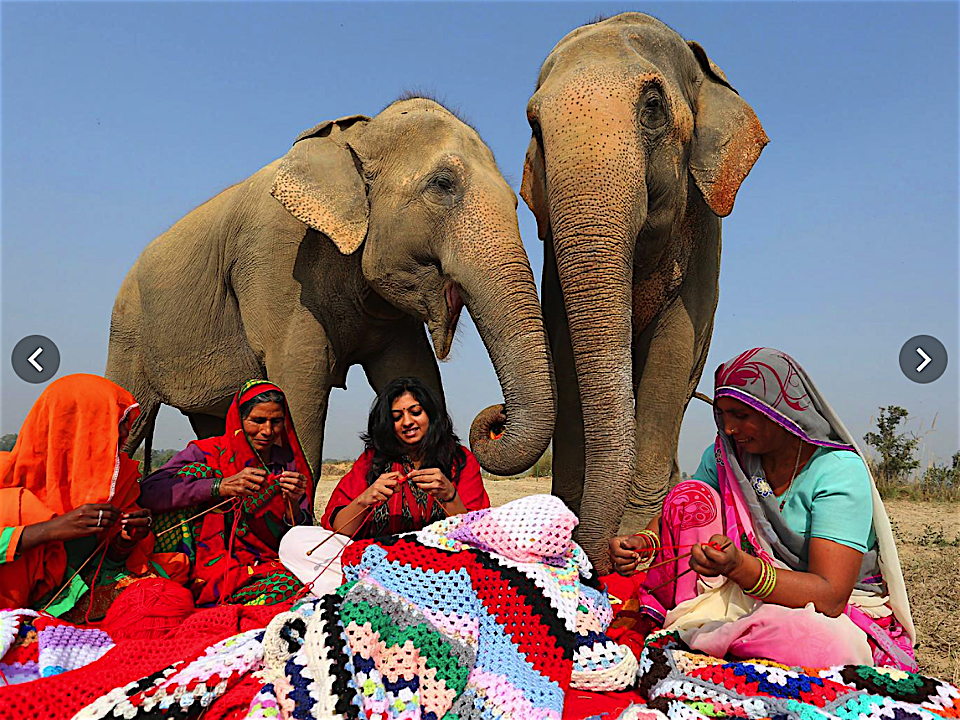
Photo by Roger Allen
gold rush
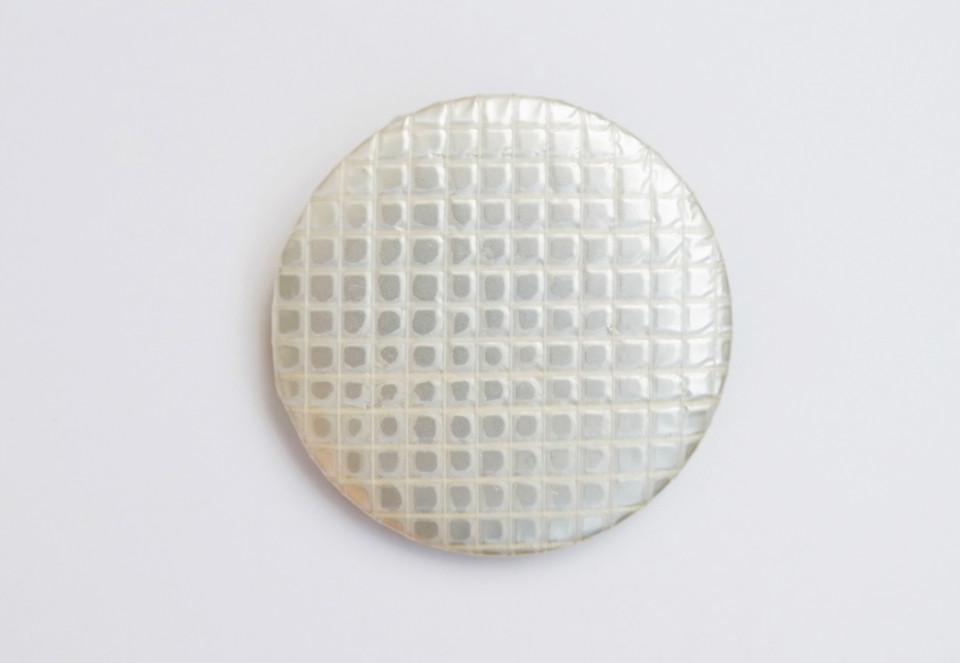
We scream we are more aware than ever, but are we really? Whenever we stand for a choice between ourselves and anything else we’ll most likely choose the selfish road. I do not think we are doing it deliberately, but we are sticking our heads in the sand for the choices we make. Would we still if we realized what consequences our so called “aware behaviour” would have?
Gold Rush is a conversation piece made from e-waste that puts unaware behaviour on the table as a subject to talk about. The contemporary jewellery collection is a project by Beatrice Brovia and Nicolas Cheng who are very interested in the material story behind design. Moreover, for this particular project they weren’t looking for the exceptional, for cosmic beauty or extraordinary materials, they were inspired by the unsettling amounts of waste resulting from the overproduction and overconsumption of electronics.
“E-waste is the aftermath of which is oftentimes one of profound environmental, political and social upset”
The two young and ambitious designers mined electronic waste and other precious metals as the basic material for their pieces. Although most of the material they used now was donated by people from their own network and completed with corporate waste, gold plated debris from NASA’s space shuttles for example, in the future their wish is to fully focus on domestic mining. This literally means mine waste from consumer products in our daily surrounding.
With their pieces Beatrice and Nicolas hope to drive disruptive questions to the surface such as, “What are the narratives that appear when jewellery talks about our desire of technology and interconnectedness?”. Even more important for these visionaries is the different revelations on the loaded character of Gold as a tête-à-tête. This material is known for its complex history, for its cultural meaning and for the human suffering it has caused.
Today the material is mainly used in consumer electronics, products we use on a daily base but clearly do not know the concrete background of.
Those who might think that a jewellery designer just designs aesthetic pieces should definitely talk to this duo, they see themselves as makers with a mission. Jewellery is a form to get their message across but definitely not the goal, materials are. “We should be more aware about what we are working with, we can’t be care free anymore”. A research into craftsmanship, process changes and the future of resources with as main message no judgement but knowledge sharing.
Gold Rush is the embodiment of our good choices trend which is focussed on participating in the journey for betterment of our world by making choices that simulate this. Nowadays consumer is searching for meaningful decisions, for utility in the most convenient way they may find. The first step in change is getting aware of the consequences our behaviour might have and Gold Rush is the perfect tool to achieve this greater goal.
Cécile Cremer
Commissioned by Current Obsession and Stedelijk Museum ’s Hertogenbosch for the CULT exhibition, still on until Februari 2017
Extremely curious and always searching for little weak signals that tell us things are changing. Cecile is a trend researcher and creative concept developer with the wanderlust of a cosmopolitan.Her aim in life is to develop things that matter to others and to help others change their strategy to be ahead of the future. Because she believes “The future is ours”.

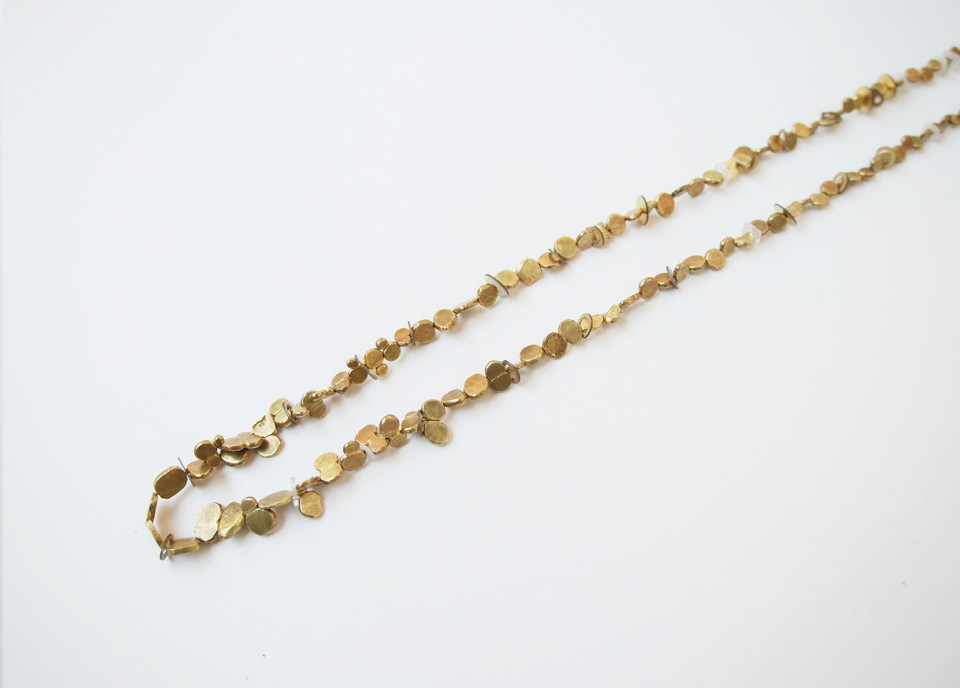
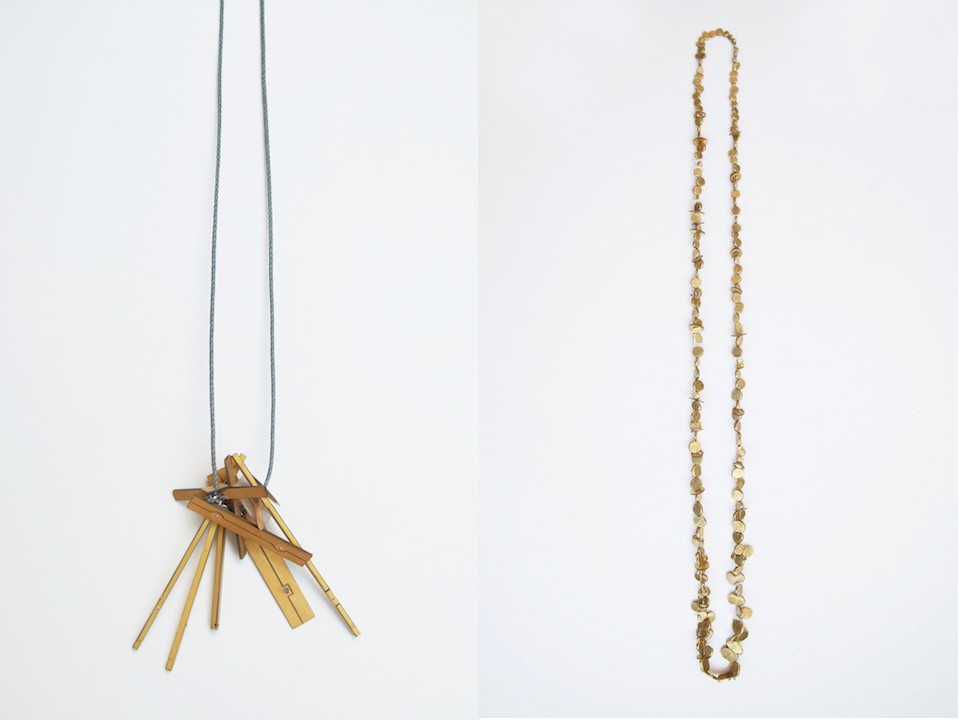
amazonian gold
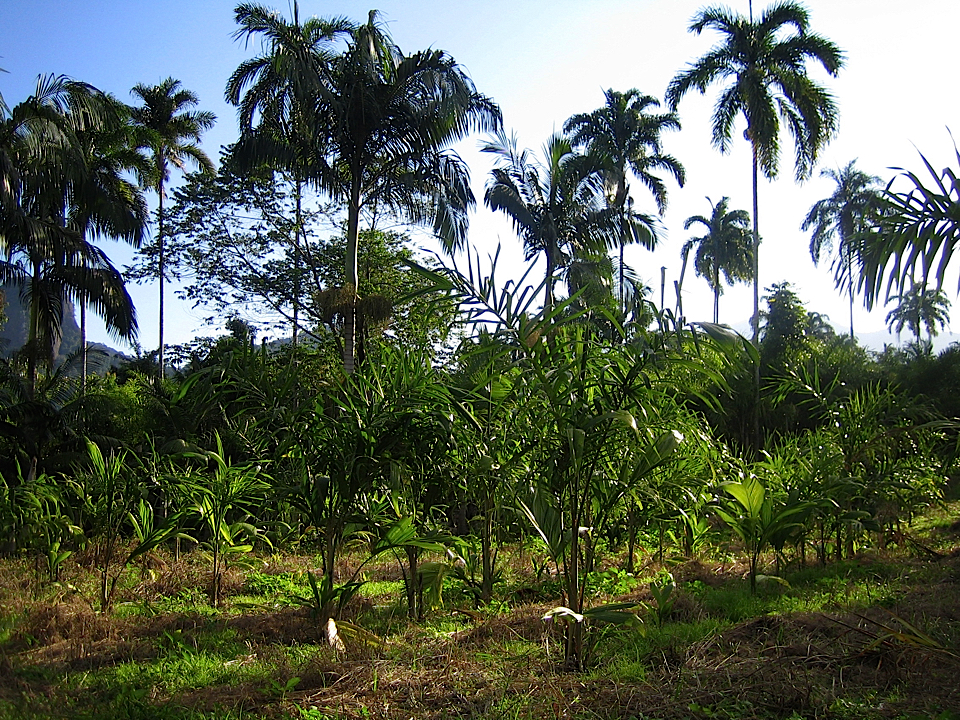
It would be impossible to come across a tiny fruit with a solar colour and with a perfectly geometric shape —as the peach palm —and not focus more of our time and attention to thoroughly dissect it.
The texture of the bark reminds us of a thin synthetic layer of leather, naturally dyed in a variation of colours between yellow and red — passing through incredible shades of orange.
But as in Fashion: nature goes beyond the surface layer of a gleaming color and a slight association with some manufactured materials. In this urge to penetrate more than one layer which takes us beyond the bark, it gives us a pleasant surprise when we open and taste how delicious can be this little fruit native to the forests of Central and South America .
This of course would be enough, if we were not talking about a fruit so rich in carotenoids, antioxidants and substances that are associated with the prevention of degenerative .
So much synesthesia captivates our senses, and, it also captivates the professionals of Materia Brazil, aimed at the total reuse of a tree and its fruit —with the support of ESDI / UERJ — they developed an alternative material from the peach palm tree (which is also extracted from the so-called ecological heart of palm).diseases.
The plywood created in a highly sustainable way, has won the IF AWARD twice (2005- 2008) in the category of new material.
Concept pieces with impeccable aesthetic design — the Mesa Bruno inspired by Japanese furniture and the Skateboard Folha Seca - made from laminates of peach palm and bamboo — show us how vast the horizons are to be explored from such species from the Amazon's Flora .
This allows us from the fruit all the way to the pseudo stem, unlimited possibilities of use without further damage to the environment.
Lu Valenzza
Lu Valenzza born in Amazonia and based in São Paulo is a future trends enthusiast and an anthropologic observer. She is offering creative research, communications support, and trend forecasting to provide actionable insights to help society and businesses move forward in the coming years, always in touch with tomorrow think scenarios for redesign a better world.
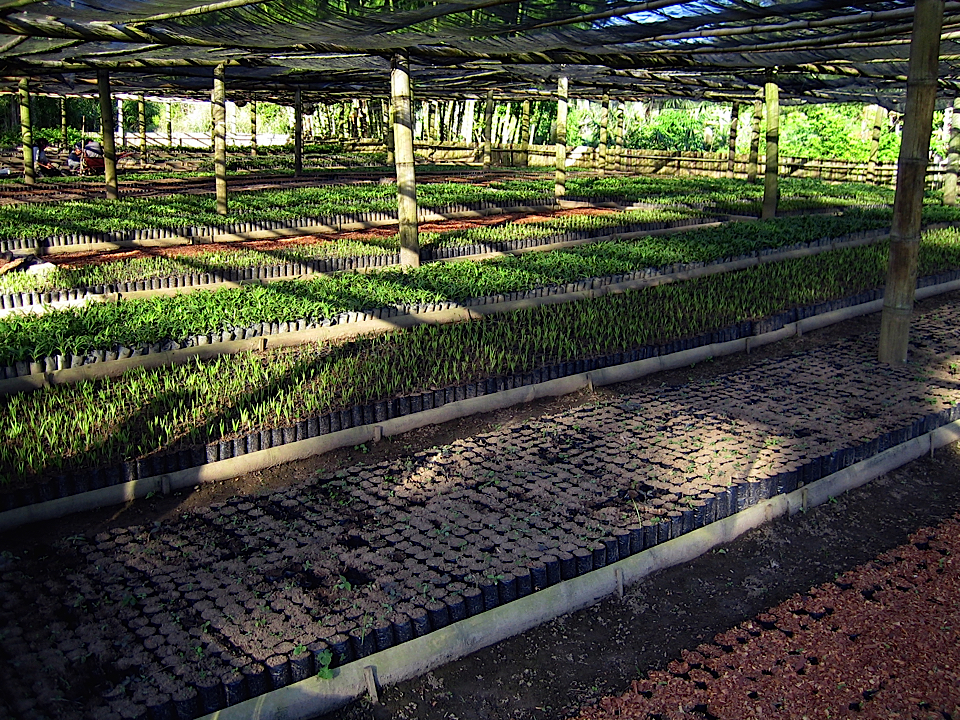
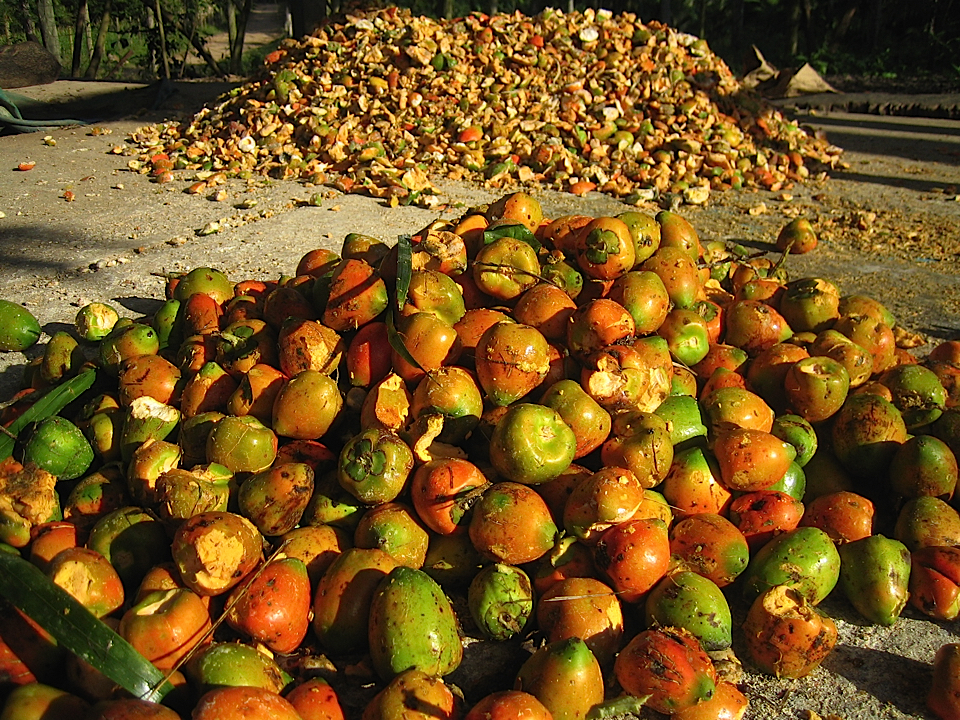
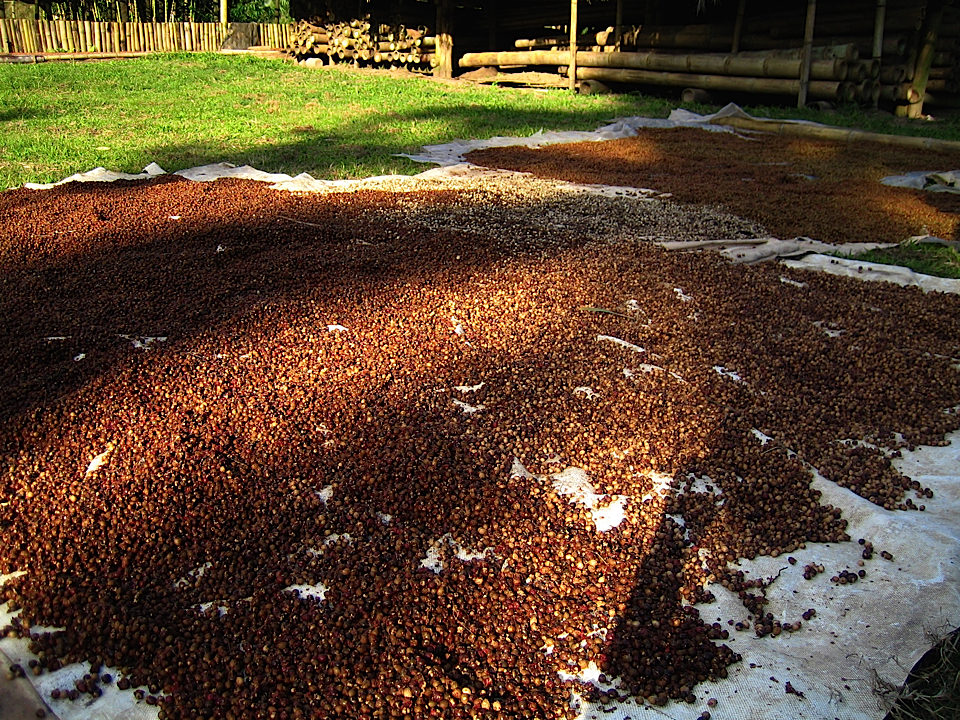
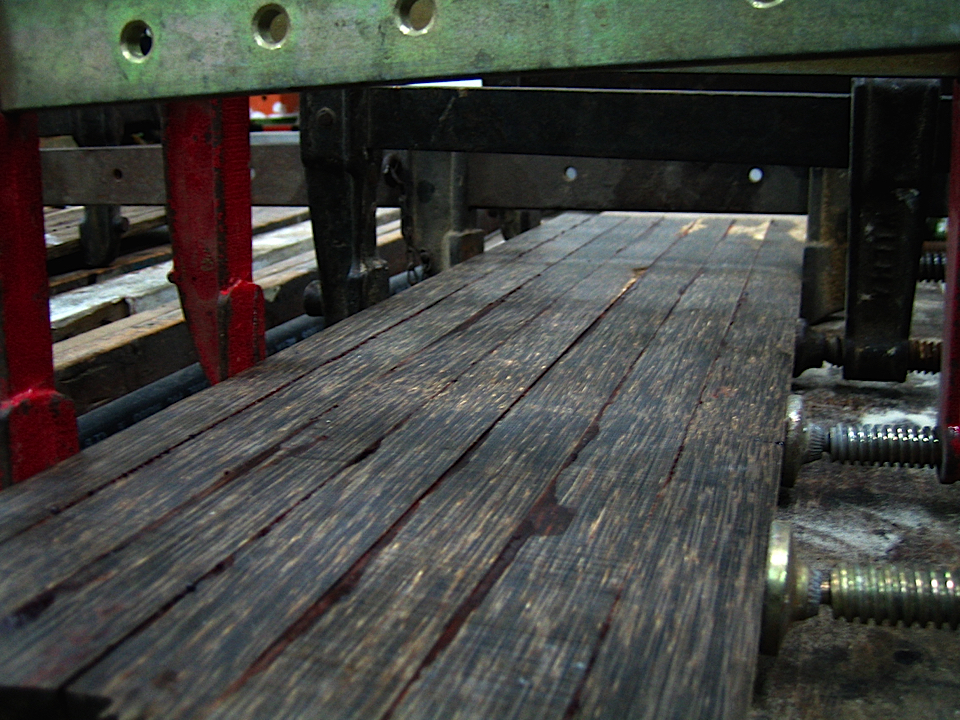
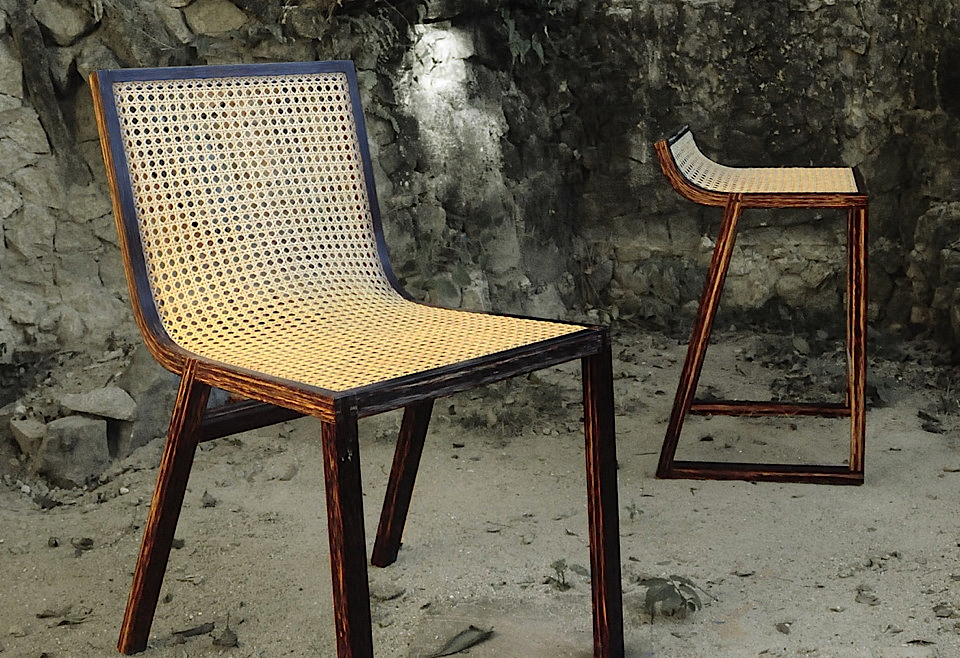

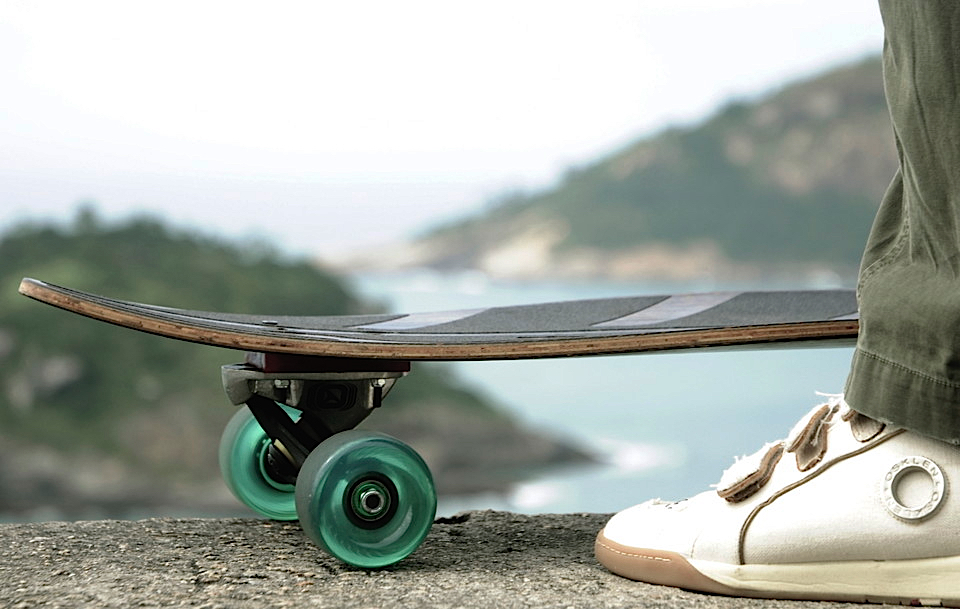
transitions: migration and travel
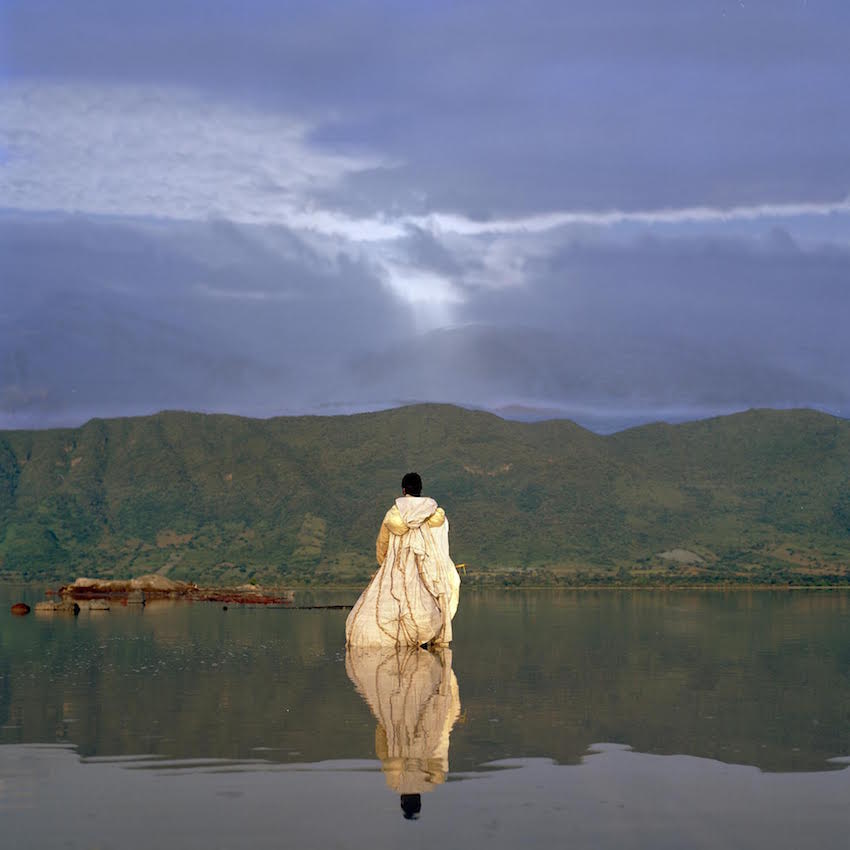
Mary Mattingly - Wearable Home - Design and Flow
If you haven’t yet encountered the words “Change design to design change” on social media, you are missing the incredibly inspiring work of “Design and Flow”. #AddFlow is the mark of numerous collaborations of Design and Flow with individuals and organizations from all design backgrounds and corners of the world, initiating dialogues and leading social change through design.
The strategic design and innovation movement (based in New York and operating in Paris and Dubai as well) is at the front line of implementing change and championing design as a tool to positively transform the world. Their social media campaign #AddFlow along with their exhibitions, events, and lectures promote the movement’s mission to use design to tackle turbulent social, political and environmental situations by “disturbing the status quo” and designing for “more than just aesthetics”. The collaborative work is disseminated through a variety of publication outlets, offering designs for sale and open designs for download.
On May 7th, D&F will present its upcoming project - a series of events as part of NYC x Design Week 2016. The events include a two part exhibition, Transitions: Migration and Travel taking place in both Manhattan and Brooklyn, an International panel discussion on what it means to add flow and the Portraits of Change Launch party. The exhibition will touch upon issues of belonging and identity, looking at the fundamental role that design plays in opening up awareness to issues, encouraging relevant conversations and presenting innovative solutions.
Featuring works and projects related to the idea of transition, the exhibit considered the constant reformation of both physical and conceptual boundaries - the challenges of voluntary versus forced migration, adapting to new transit regulations and technologies, and integration into new cultures and societies while maintaining the connections to native lands and homes. Concepts of movement from one place to another as well as symbolic representations such as passports and visas are explored in relation to transient lives.
Among the exhibited works are an open source interactive map Visualizing European Migrant Crisis by Lucify, an exclusively showcased proactive architectural initiative featuring a functional refugee shelter (currently adopted in the Middle-East) by Rabih Shibli and Mary Mattingly’s “Wearable Homes”, an award-winning wearable individual and communal shelters.
Lior Fisher Shiloni
designandflow
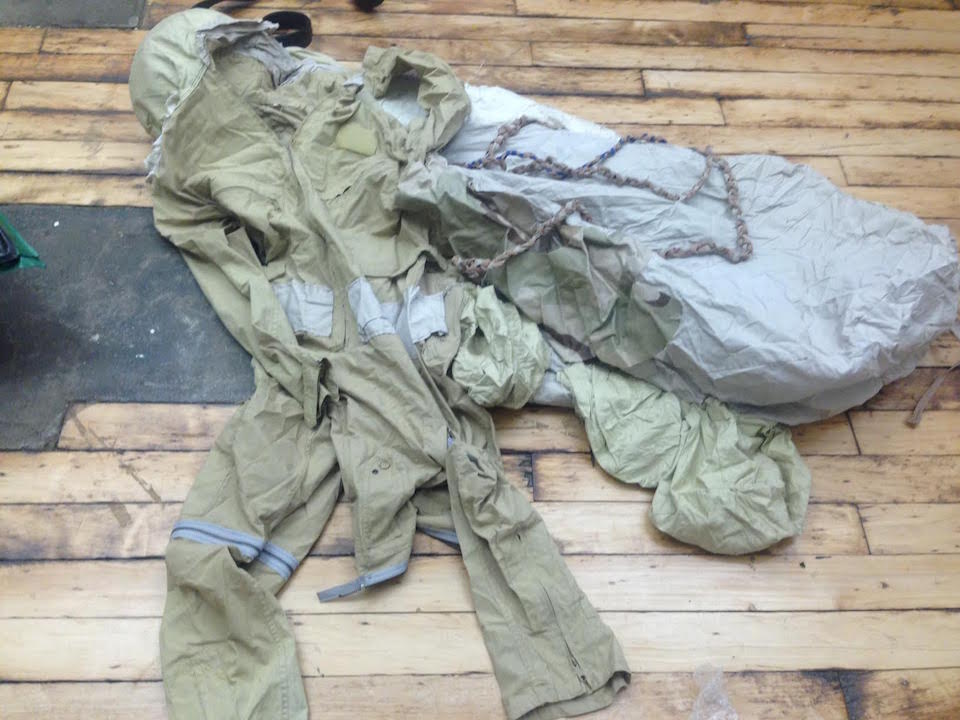
Mary Mattingly - Wearable Homes - Design and Flow
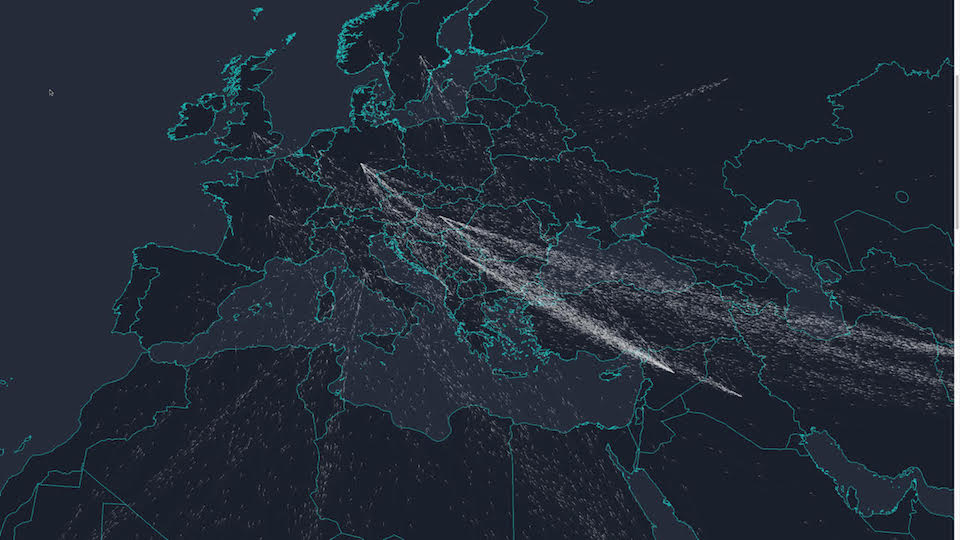
Lucify Visualization Design and Flow
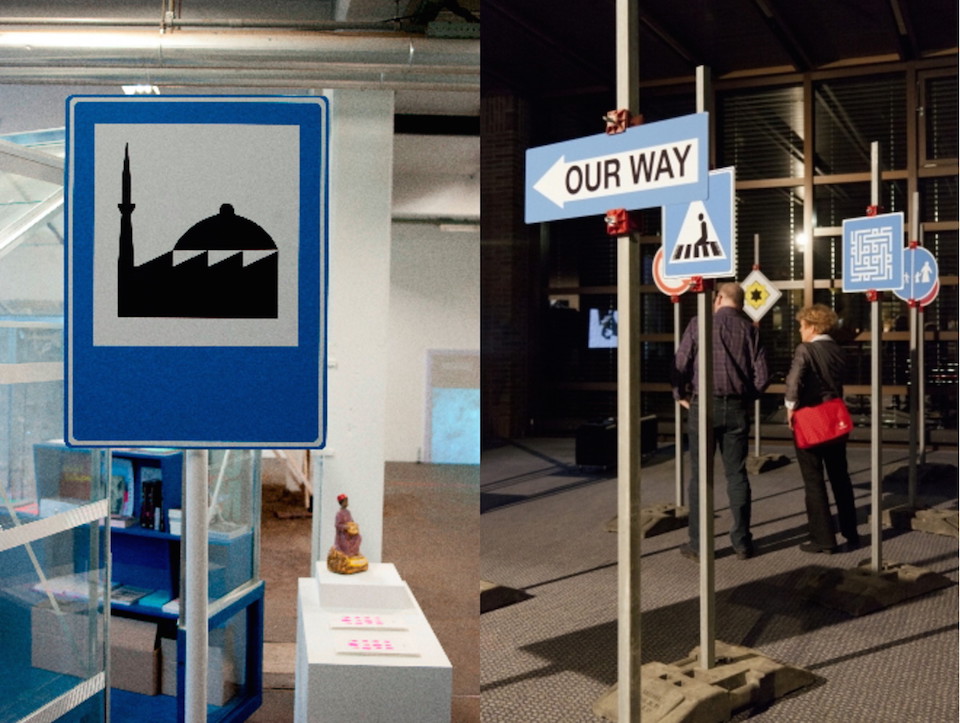
Azra Aksamija - Cultural Transfers - Design and Flow
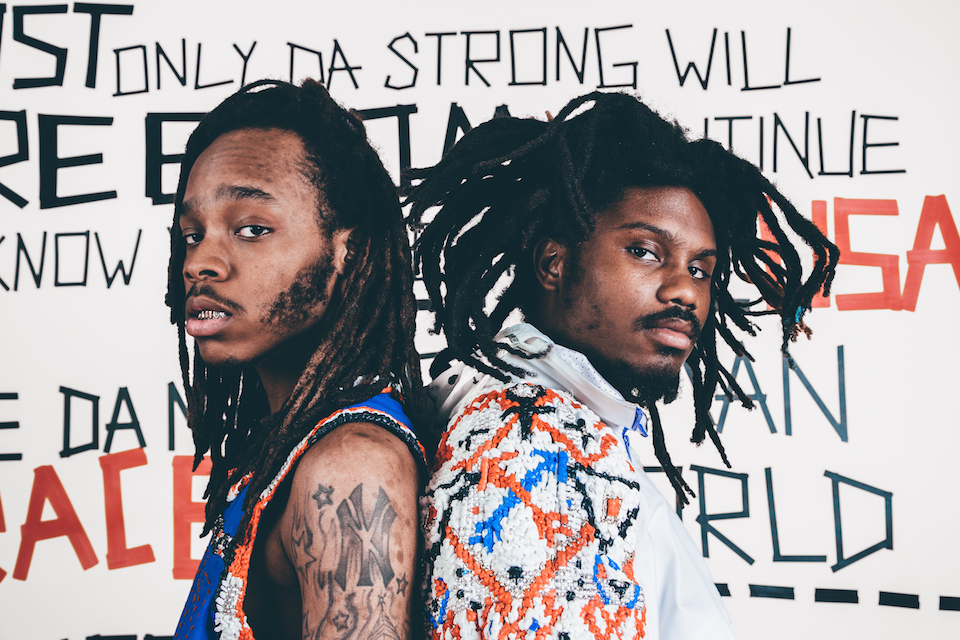
Playground of Americas - Design and Flow
a biodegradable water bottle
A 100 per cent natural alternative to the plastic water bottle.
To make the product, Iceland Academy of Arts’ product design student Ari Jónsson used a powdered byproduct of algae called agar and combined it with water to form a jelly-like substance. The substance is then heated and decanted into a bottle-shaped mould where it chills in icy water before it solidifies in a refrigerator for a few minutes. Once set, the jelly can be removed from the mould as a solid water bottle.
The biodegradable bottle retains its shape while it is filled with water but slowly starts to decompose when it is empty. Because the bottle is 100 per cent natural, users could even nibble on the leftover vessel if they like its gelatinous taste. Apparently agar is often used as a substitute for gelatine in vegetarian or vegan desserts.
“I feel there is an urgent need to find ways to replace some of the unreal amount of plastic we make, use, and throw away every day,” says Jónsson. “Why are we using materials that take hundreds of years to break down in nature to drink from once and then throw away?” he adds.
Kate Walker
The algae-based bottle was premiered at the recent DesignMarch festival in Reykjavik.
This post was originally published on the creative platform of Design Indaba
compostable fashion
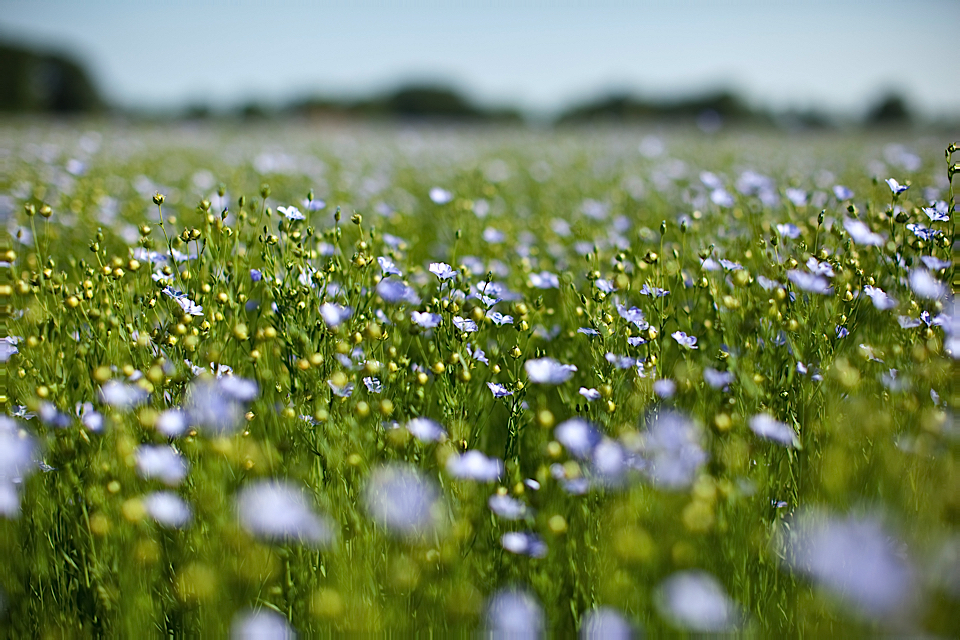
Photo by Lukas Wassmann
Eco chic, ethical consumerism and sustainable fashion are the new buzz words. The apparel industry has taken a major turn in the past 20 years: fashion has evolved into something similar to fast food, it’s convenient but made with few respect. It’s the whole supply chain that has to be re-invent: the use, production, consumption, disposal, and recycling of clothing. Sustainability includes a lot of components: social responsibility, human rights, energy and materials.
In 1993, graphic designers Markus and Daniel Freitag were looking for a functional, water-repellent and robust bag to hold their creative work. They developed a messenger bag from used truck tarpaulins, discarded bicycle inner tubes and car seat belts. The first FREITAG bags took shape in the living room of their shared apartment – each one is recycled and unique.
The swiss manufacturer has a denim line. You can’t do much with the jean silhouette: the five pocket is even more than a classic, it’s an icon. Today we are looking for vintage inspiration, the shape doesn’t need a redesign. But the production is really damaging a lot: too much water and pesticide for the cotton, to much travel for all components …
F-ABRIC denim from FREITAG is a five-pocket jeans without rivets or polyester threads, it’s made in Europe using European bast fibers true hemp and linen and, it’s naturally 100 % compostable even the sewing thread is biodegradable .
« If you want to make biodegradable clothing in your own neighborhood, you’ve got to go back to the beginning of the development process and start with the fibers. In our quest for the right raw materials, we ran into two old acquaintances. »
Freitag completely compostable textiles are based on vegetable fibers produced using a minimum of resources within an area of 2500 kilometers form the factory and it’s not cotton!
Linen – flax – is the oldest textile fiber in the world, it’s comfortable to wear and extremely durable. Farming flax requires quite a bit of know-how, but it doesn’t need a lot of fertilizer or pesticides, or additional irrigation and last but not least it grows best in temperate climate zones.
Hemp fibers are versatile, easy to care for, and virtually perfect. They’re warm, breathable, and extremely strong. Hemp fibers are extracted from the plant’s bast. The plant thrives in almost any climate, doesn’t need much water or any pesticides and doesn’t deplete agricultural soil.
The end of your jeans can now be completely sustainable: when the pair is exhausted from years of use, you can recycle your pairs into the earth – as each pair of jeans is 100% compostable after removing the buttons.
Cecile Poignant
www.freitag.ch
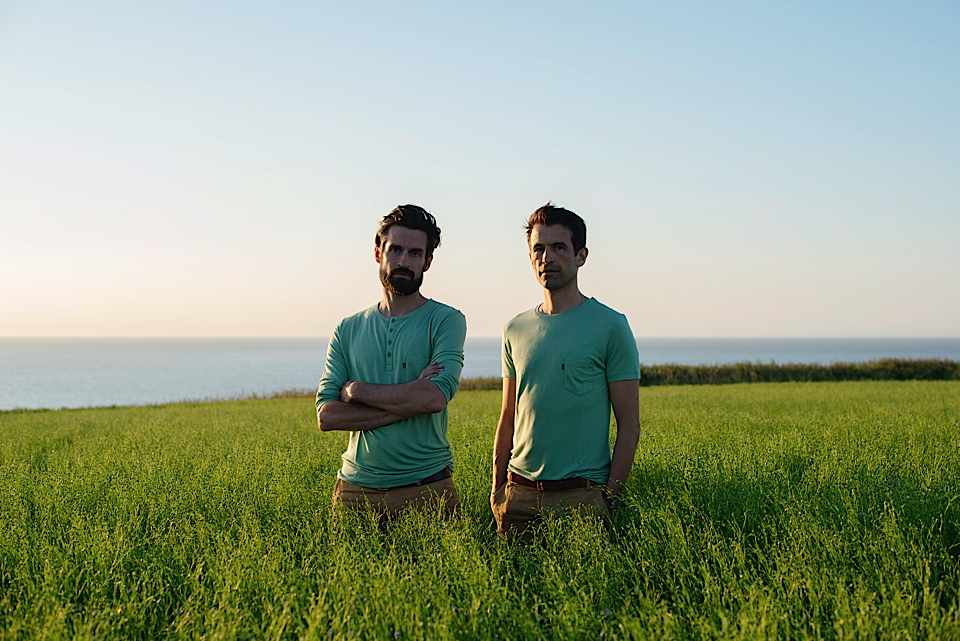
Freitag brothers - Photo by Lukas Wassmann
Camera/Edit: Yves Scagliola - Music: Zigitros - Voice: Russell Hergert
`
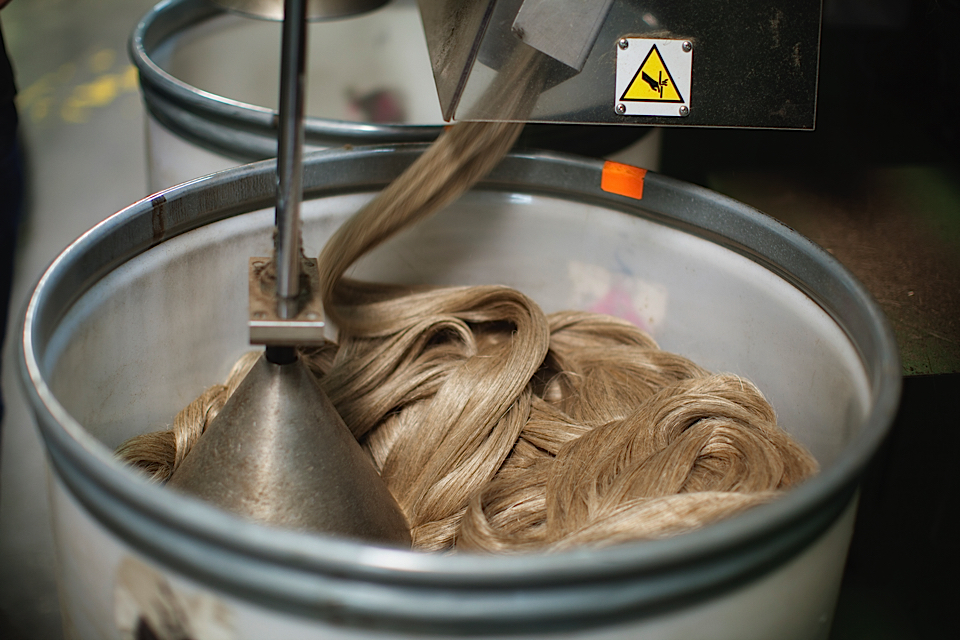
Photo Credit FREITAG
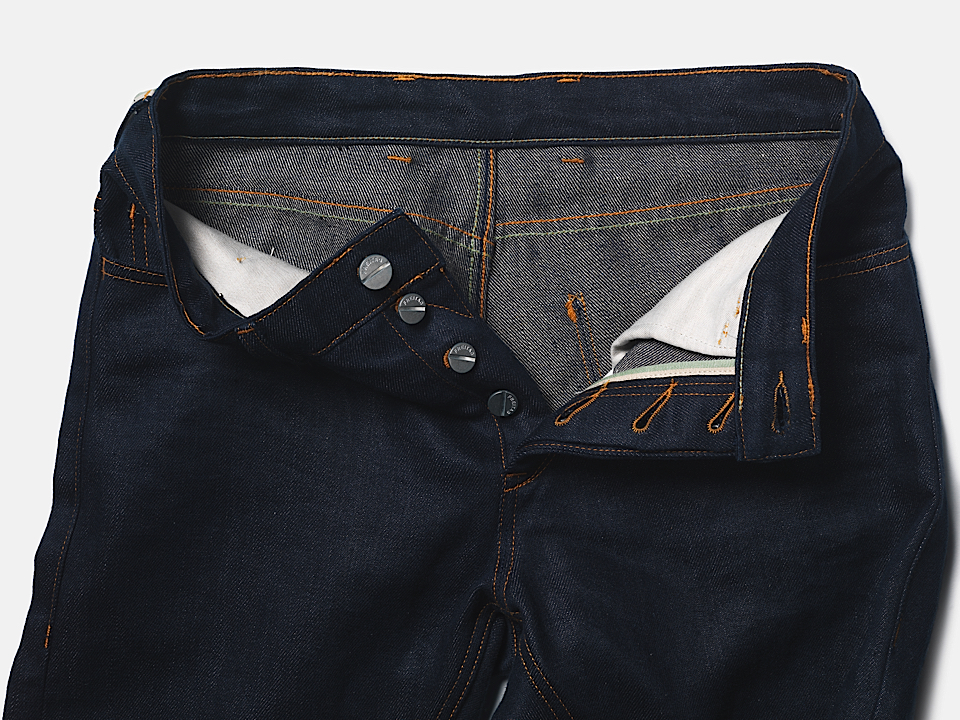
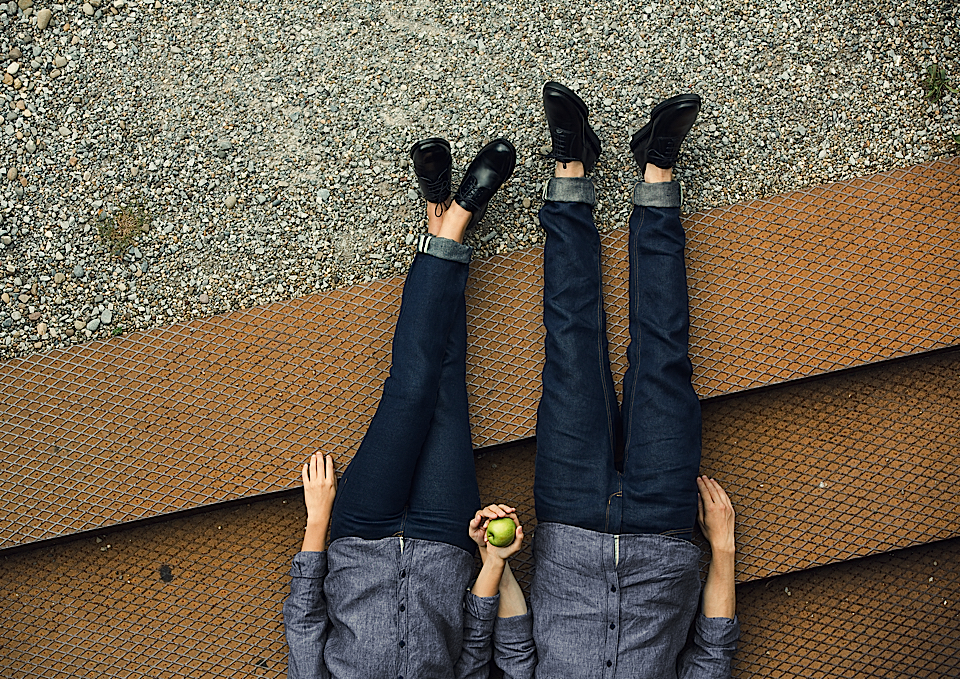
photo by Yves Bachmann
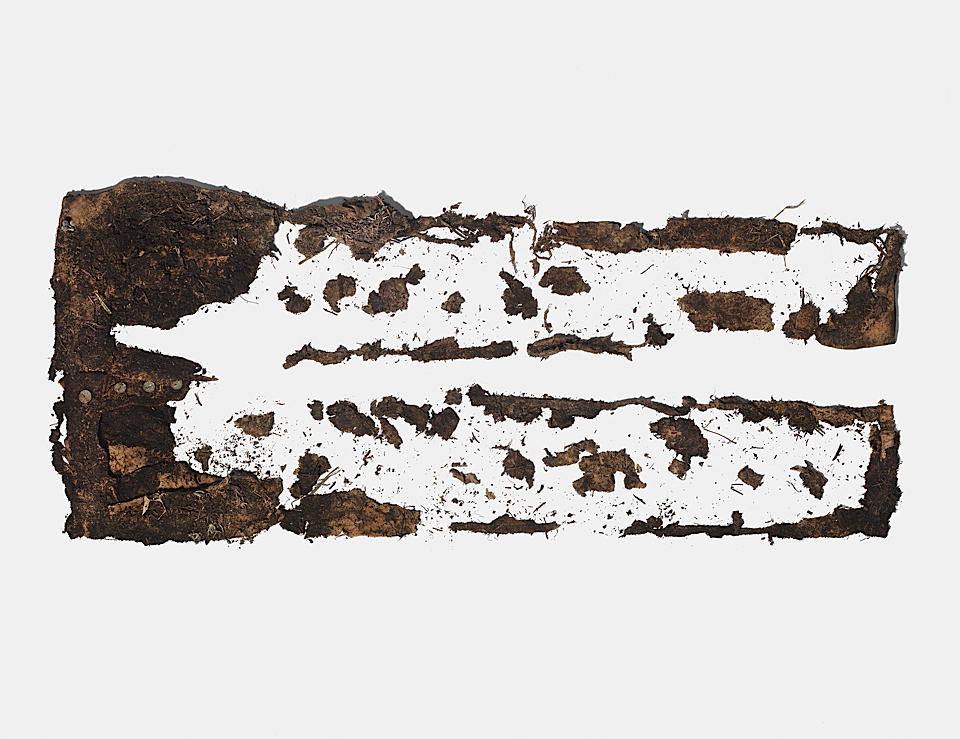
Photo by Oliver Nanzig
doing more with less
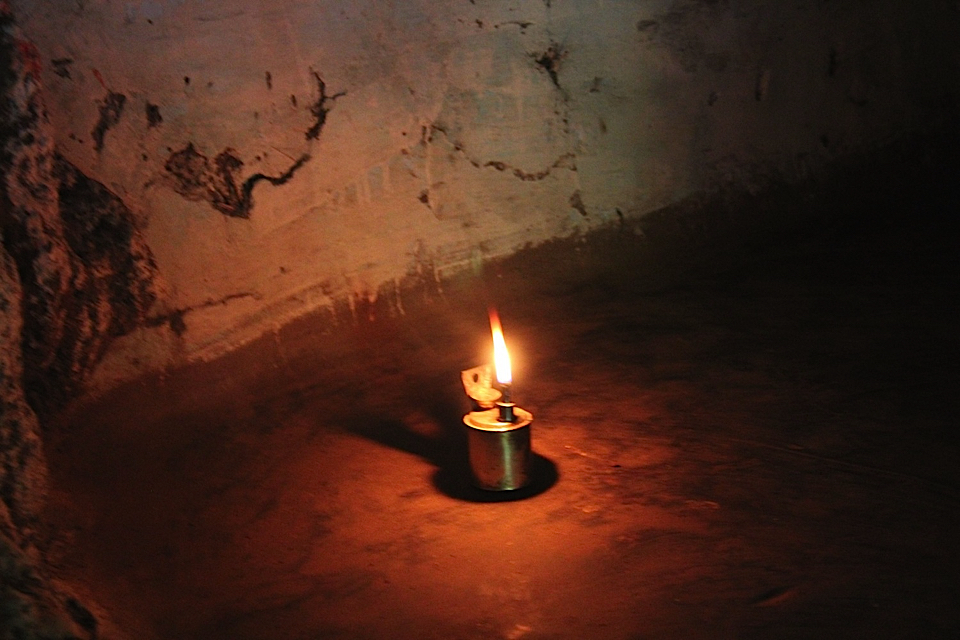
There are still more than 1.1 billion people on Earth without access to electricity.That means when the sun goes down, they usually have to burn something to provide light, most of these people use kerosene lamps to light their homes.
Those lamps have damaging effects: 780 million women and children breathe kerosene fumes equivalent to inhaling 40 cigarettes a day.The cost of kerosene is a poverty trap: amongst the poorest populations it consumes up to 30% of their income.In India alone 1.5 million people suffer severe burns each year, primarily due to overturned kerosene lamps.
Invented by London-based designers Jim Reeves and Martin Reddiford, GravityLight is a clean, safe and affordable alternative to kerosene lamps.It uses a bag filled with rocks or earth, attached to a cord, which slowly descends similar to the weight drive in a cuckoo clock. This action powers the light for up to 20 minutes.People have an opportunity to break the fuel poverty cycle cause by kerosene lamps.This starts a positive cycle - of money saved, increased productive hours and improved health.
Reeves and Reddiford developed the first prototypes of the GravityLight over two years ago, and with the help of a hugely successful Indiegogo campaign, have been testing and refining the design ever since.They were just back for a new crowdfunding campaign with a new and improved version : cheaper, brighter, and longer lasting than the first iteration.
GravityLight will be available internationally but Kenya is one of their launch markets for off-grid families. It represents a gateway to East Africa and has an emerging manufacturing industry.The goal is to learn from and partner with the best and the people behind GravityLight found a fantastic, like-minded partner to work with in Kenya: Burn Cookstove Manufacturers. This means that the next generation of Gravitylight will be made in Africa.
Cecile Poignant
http://gravitylight.org/

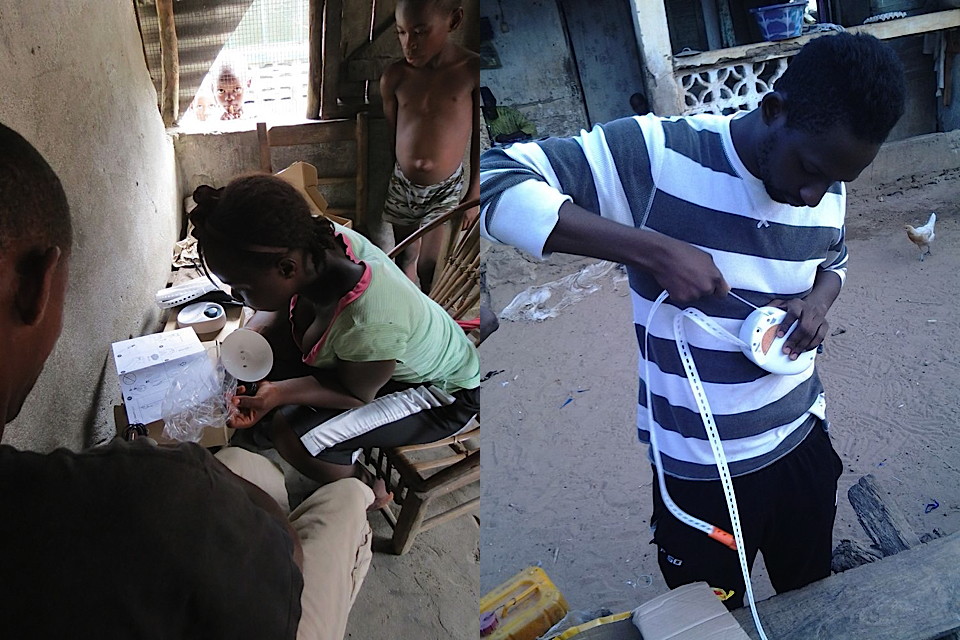
v
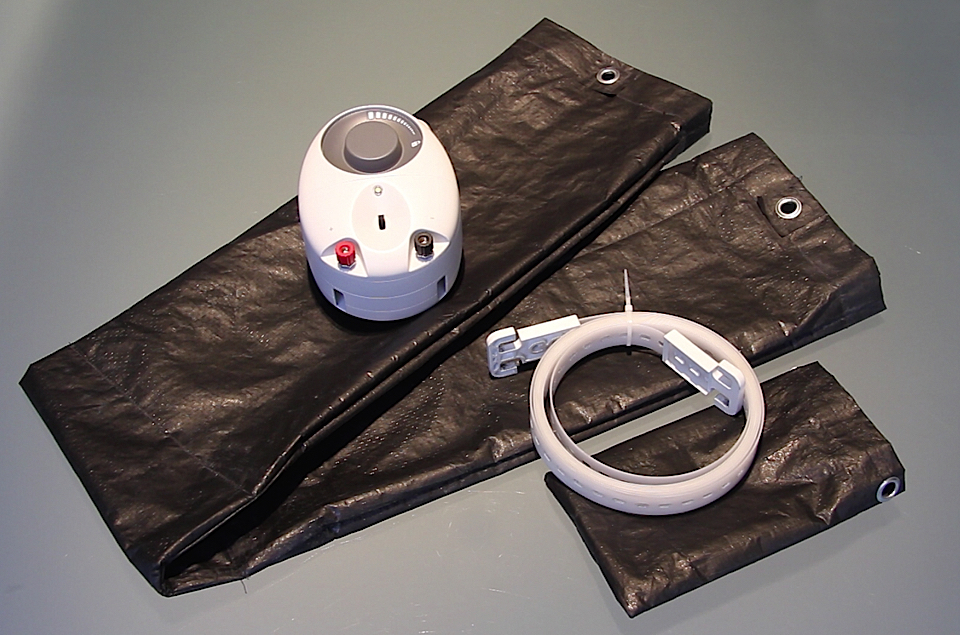
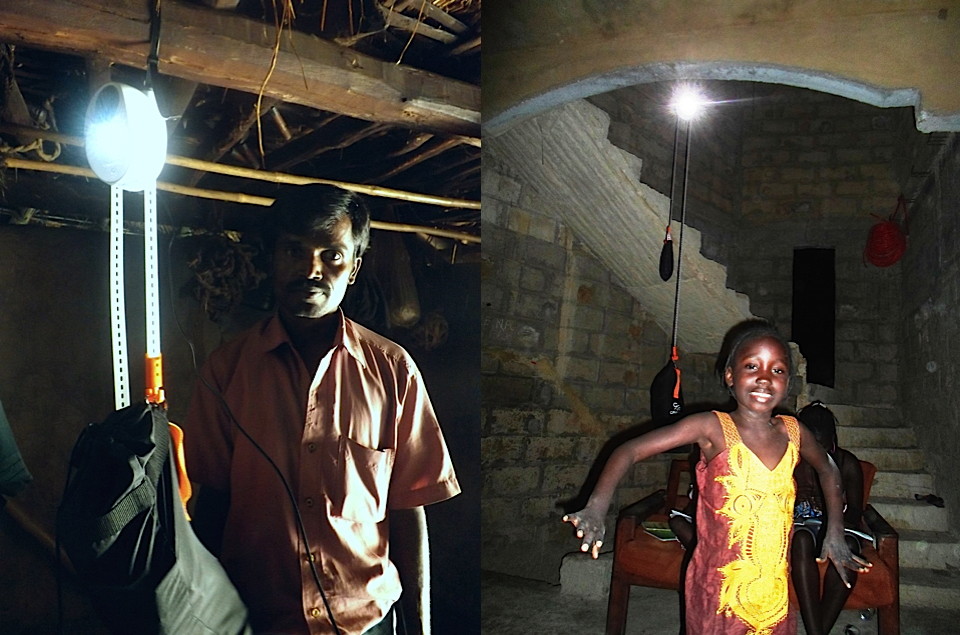
cucula
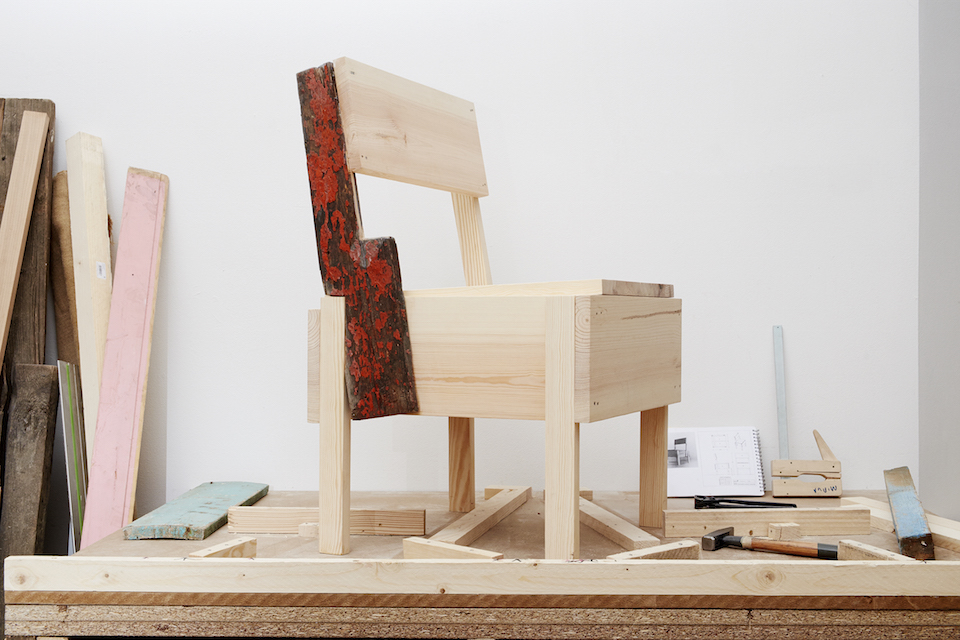
photo by verena bruening
CUCULA is a pilot project which empowers 5 refugees to build their future. They build Design Classics to integrate artifacts from their journey over the Mediterranean. The refugees express both their own history and their vision of a self-determined future. In order to open up a professional perspective and to engage in a proper education, the 5 young men need a residence and a work permit. The furniture sale will help pay five scholarships, which are an important step towards legal residence.
Ali, Maiga, Saidou, Moussa und Malik are from West Africa, from Niger and Mali. They left their home countries as war and drought fundamentally destroyed their chances for a future in their own countries. They have survived a murderous boat trip over the Mediterranean, via Lampedusa and Italy, ultimately immigrating into Germany. They would like to stay and make a life in Berlin. Cucula wants to help these refugees break with the notion of ‘victimhood’ and at the same time unfold their self- efficacy and open up a perspective for a self-determined life.
In the last a couple of months, Cucula has established its own workshop, a lively ‘production environment’ run together with designers and tutors. It is here, between the poles of African and European culture, that unique design furniture is taking shape, accompanied by education in the areas of woodwork, construction and planning, academic classes, including language training and legal advice.
The furniture pieces are not only design classics, they also represent the stories of their makers. The 19 DIY furniture design plans from Enzo Mari’s book ‘Autoprogettazione’ in 1974 mark an important milestone in the history of product design. Positioned in contrast to the formalism of the time, Enzo Mari suggests the democratization of design, provoking a stronger identification with our own furniture and fostering a learning and reflection process. 40 years later Enzo Mari grants the team of Cucula the rights to sell furniture based on his plans.
Disaster scenarios shouldn’t put us in a state of helplessness - proactivity is required. Design and creative industries offer a vivid transference space for a kind of creativity which is not limited to political bounds.
www.cucula
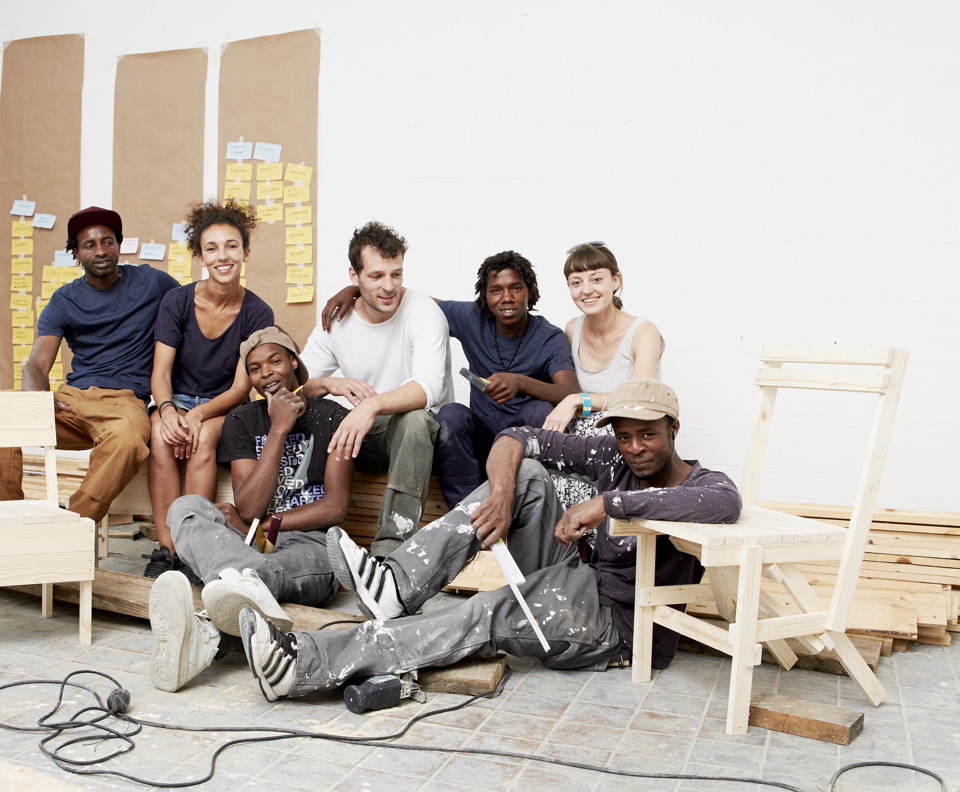
Cucula, the team !
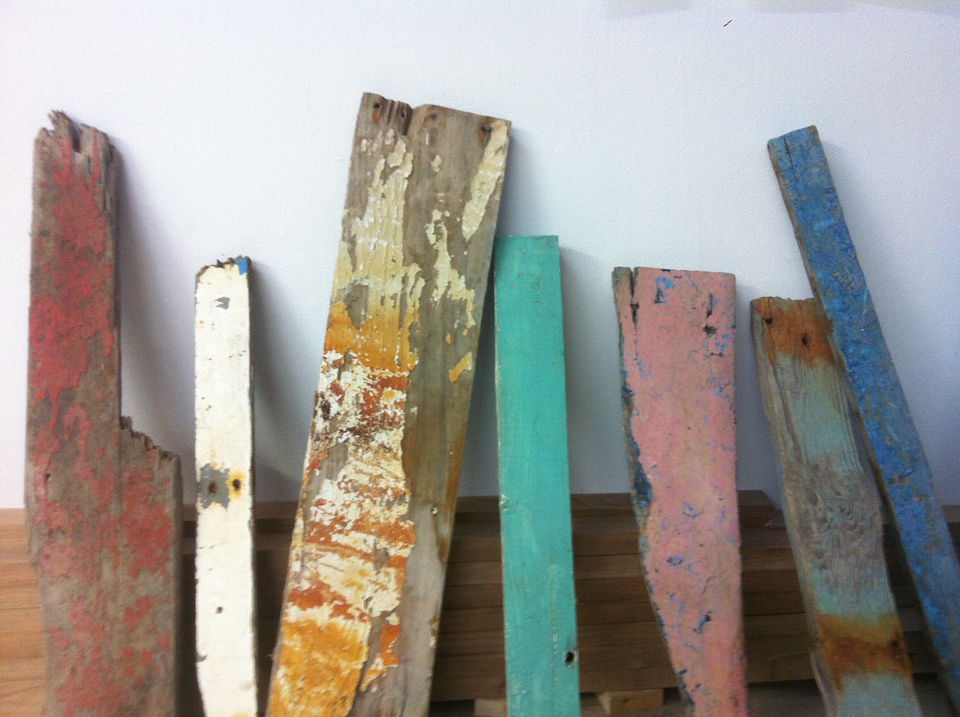
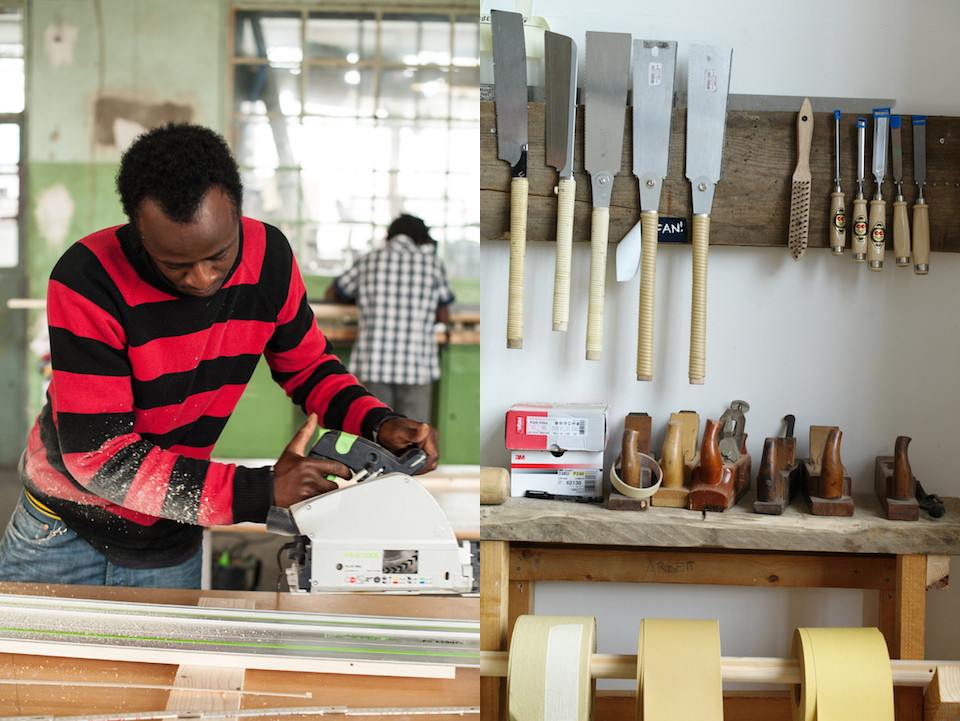
left photo by Sally Lazic - right photo by Fred Moseley

title="cucula" width="960" height="644" class="aligncenter size-full wp-image-30542" />
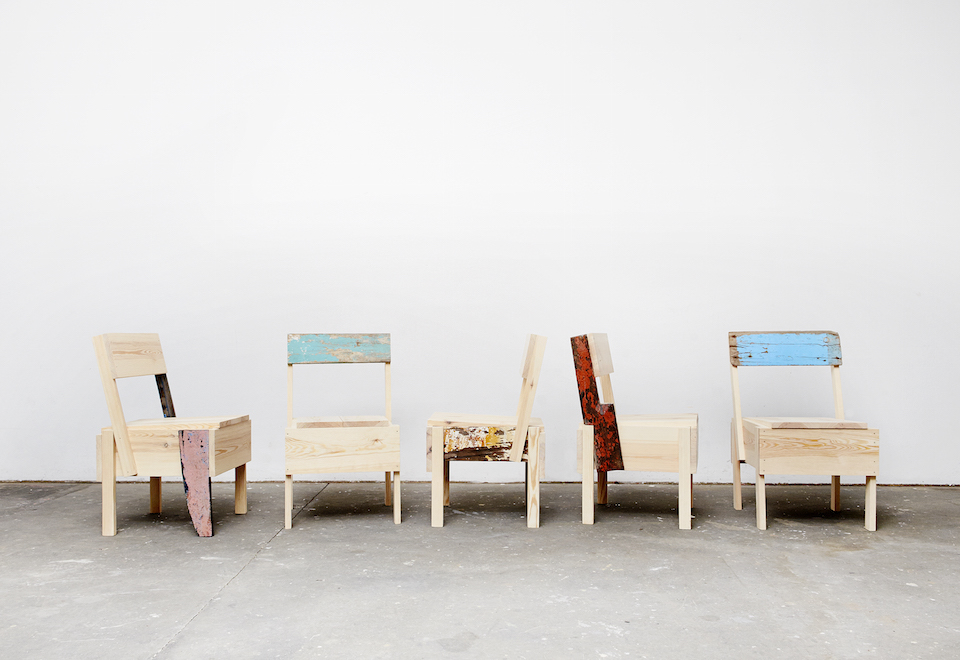
photo by verena bruening
